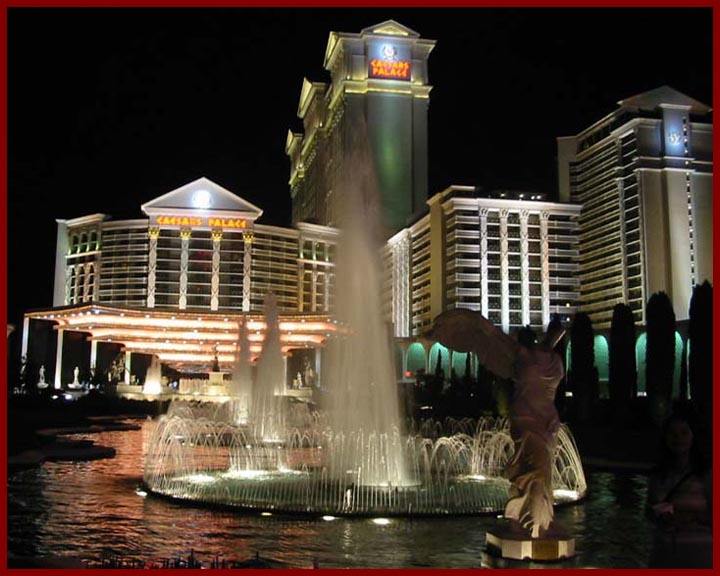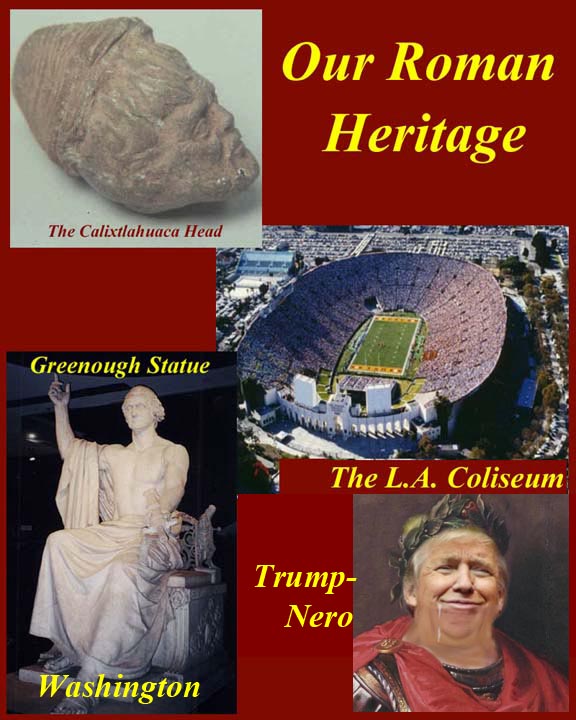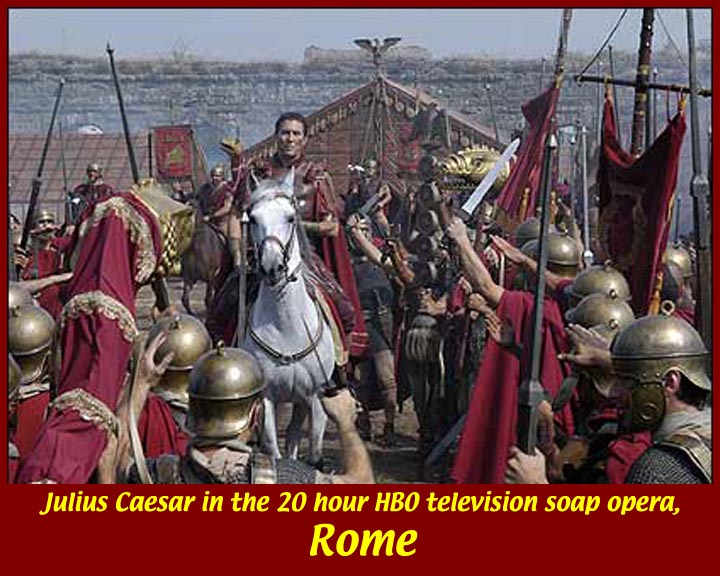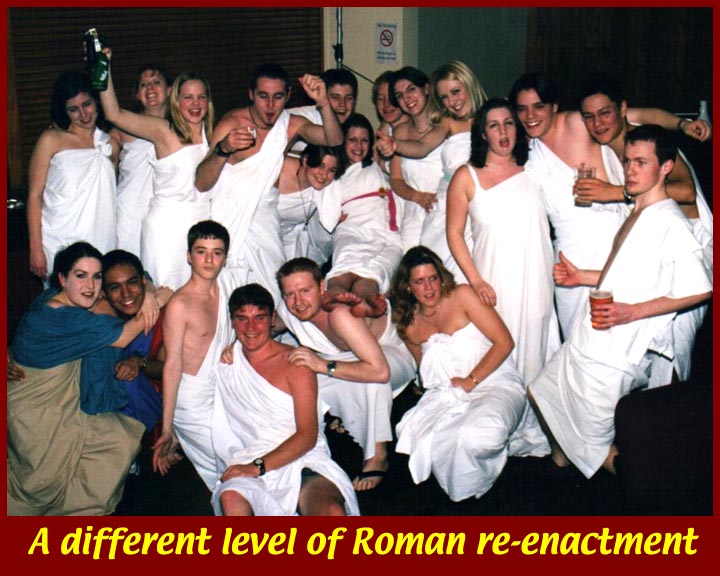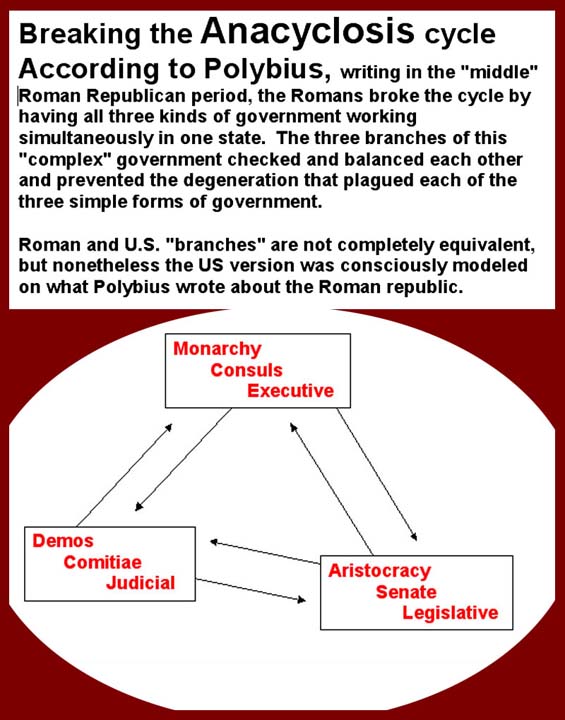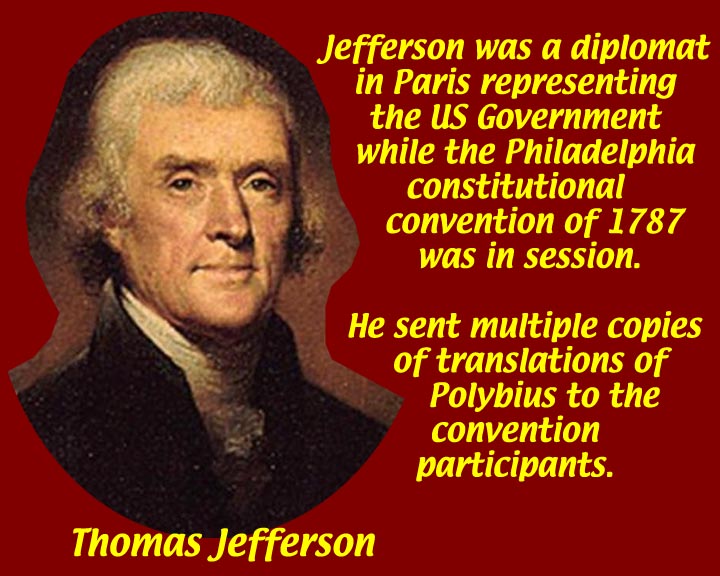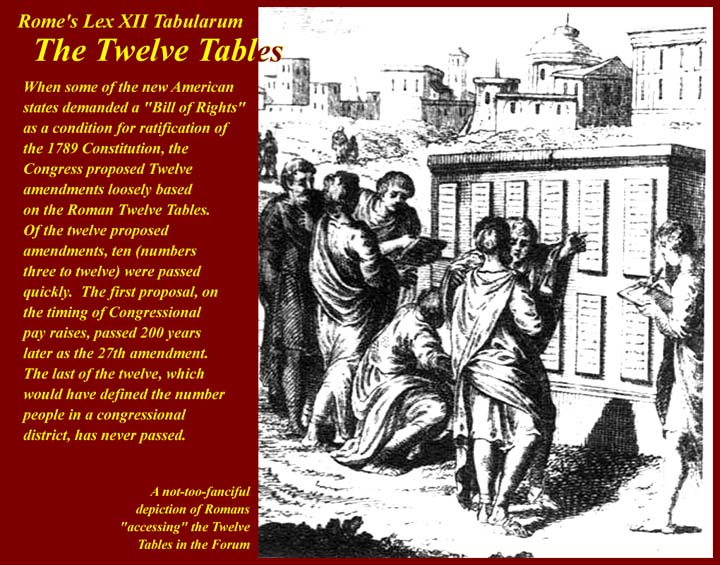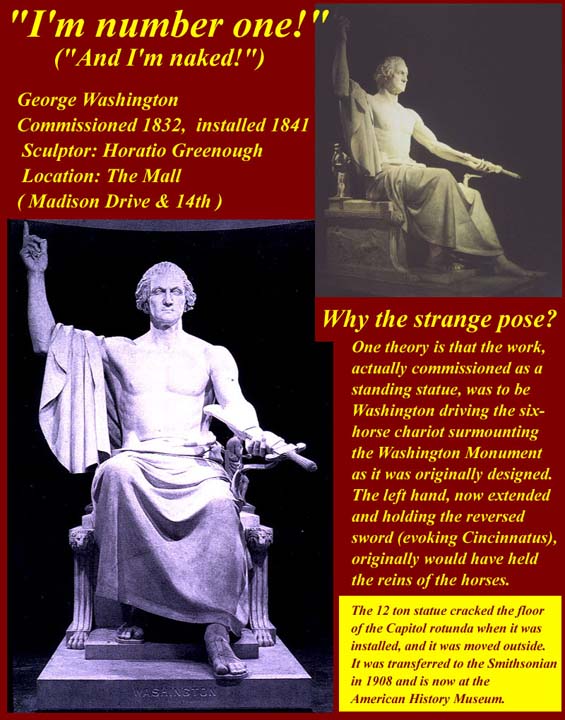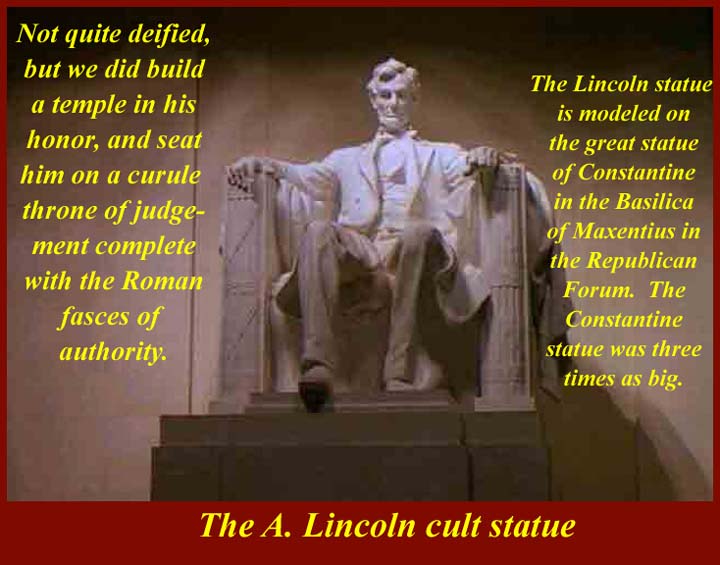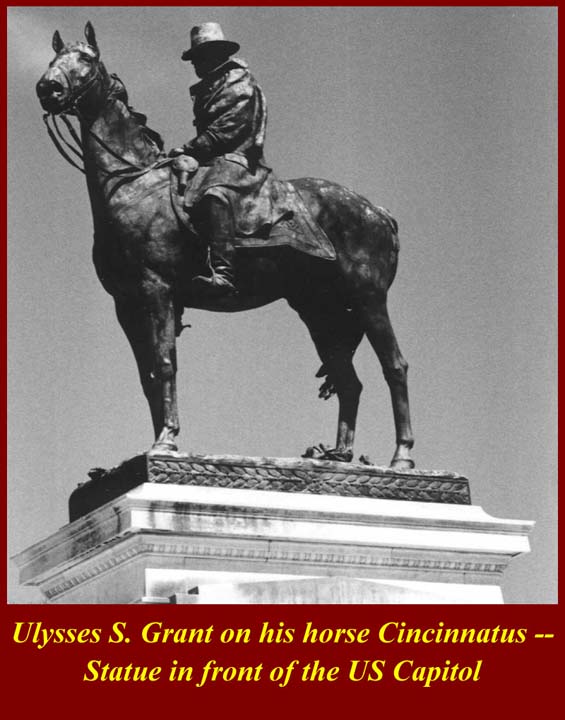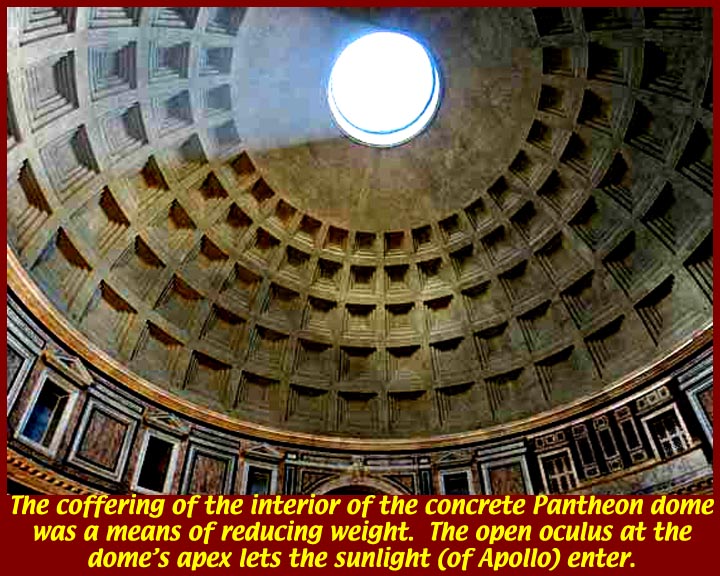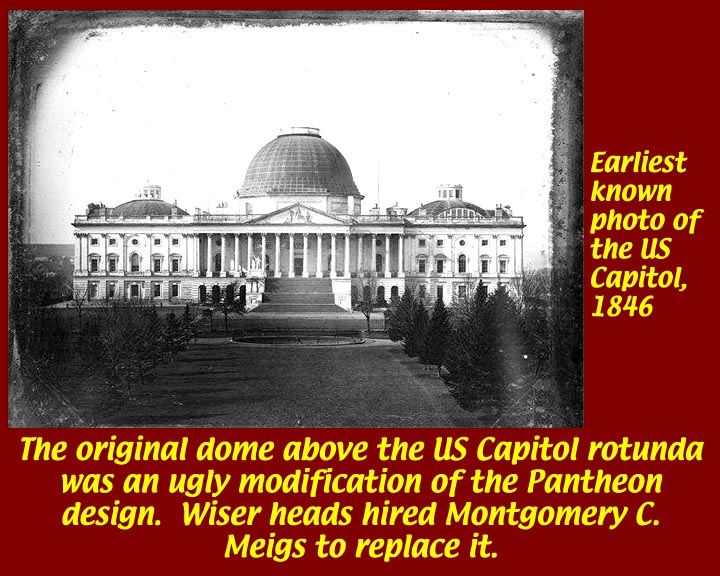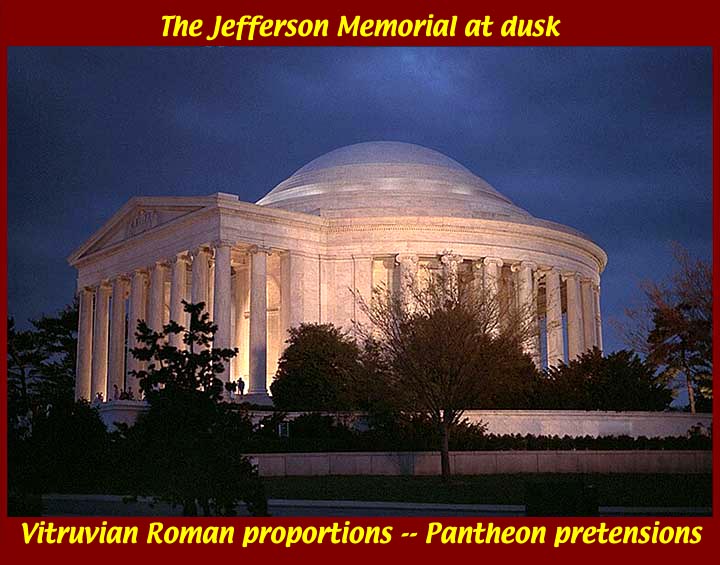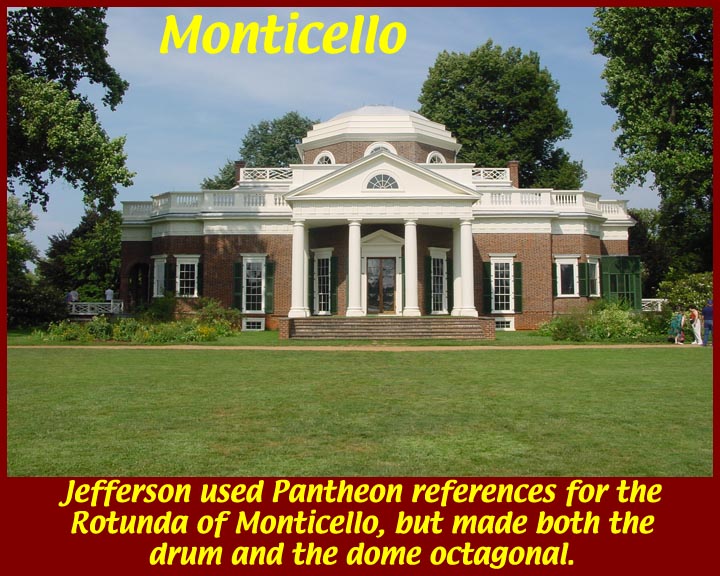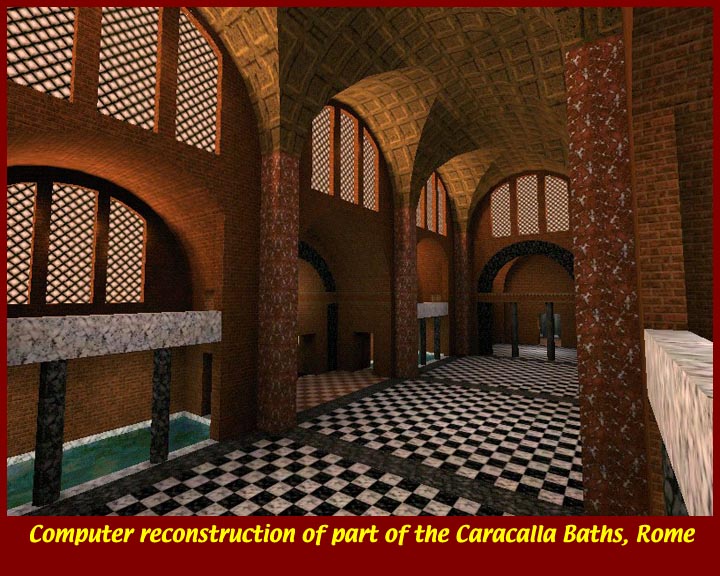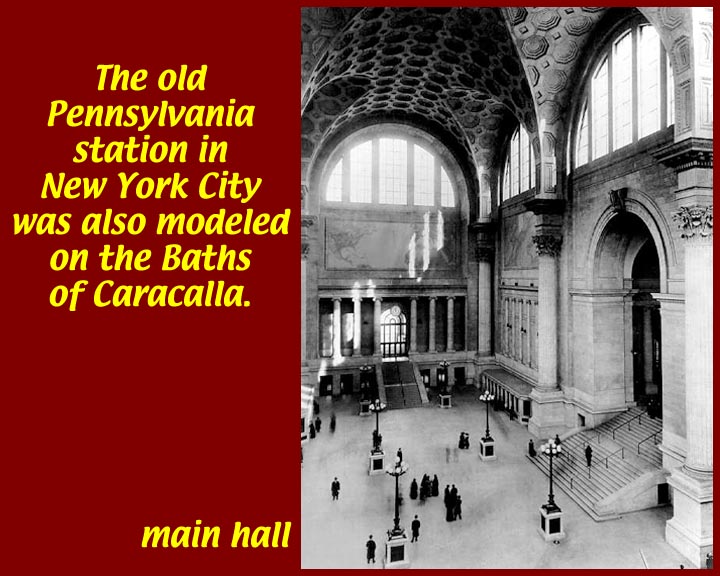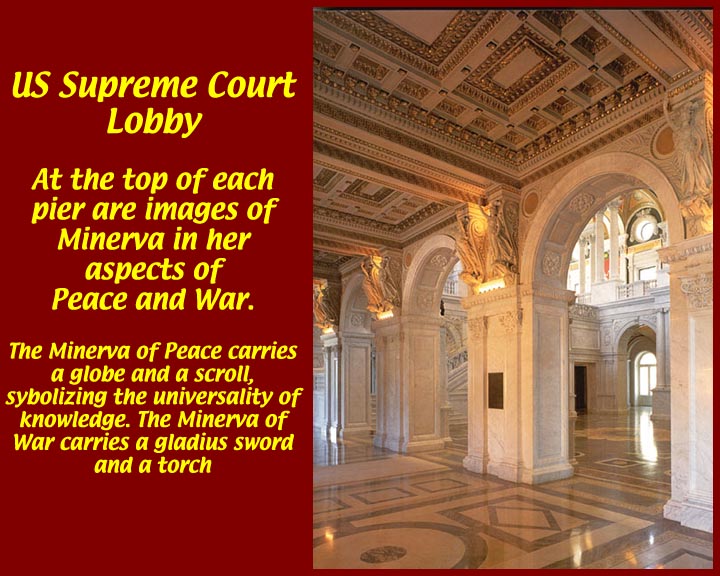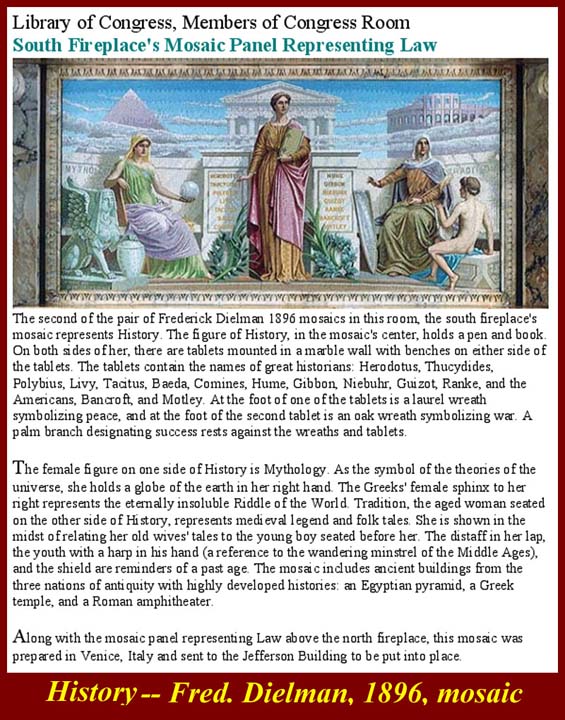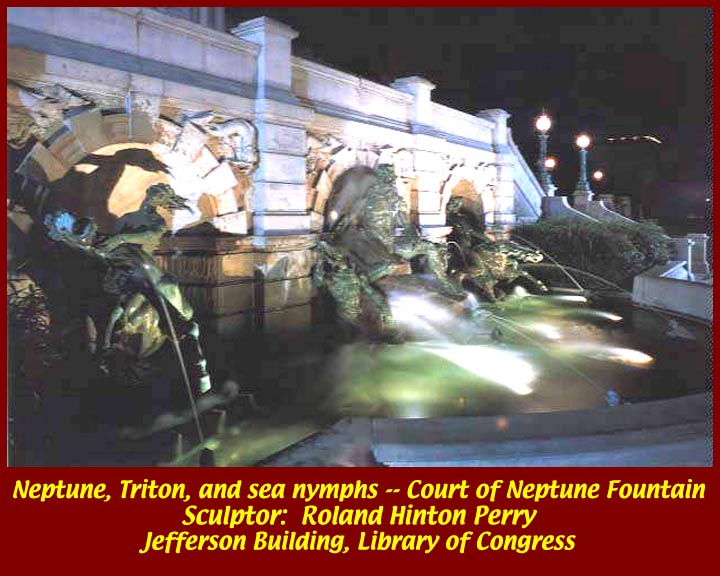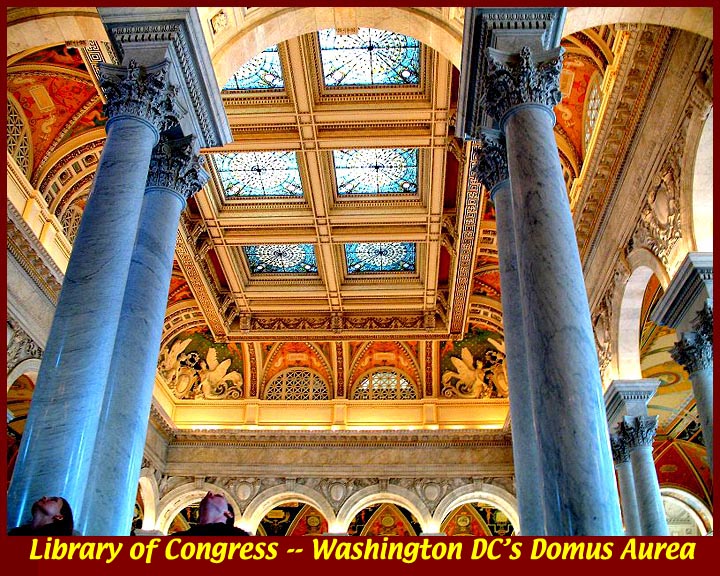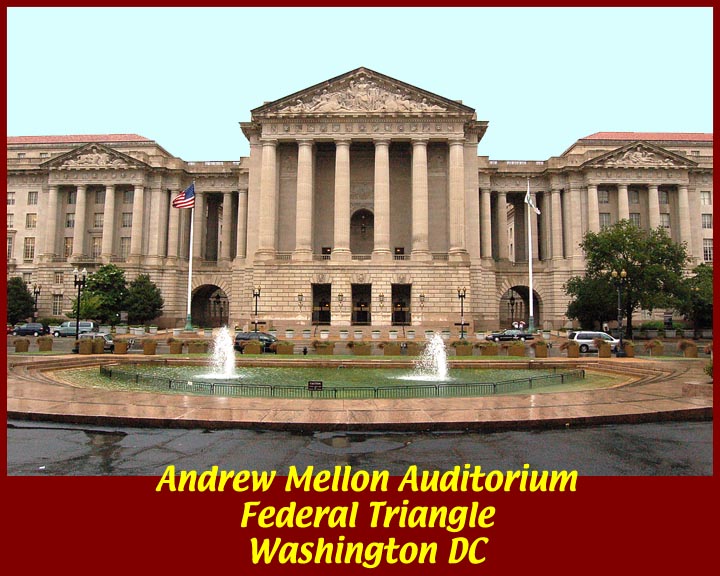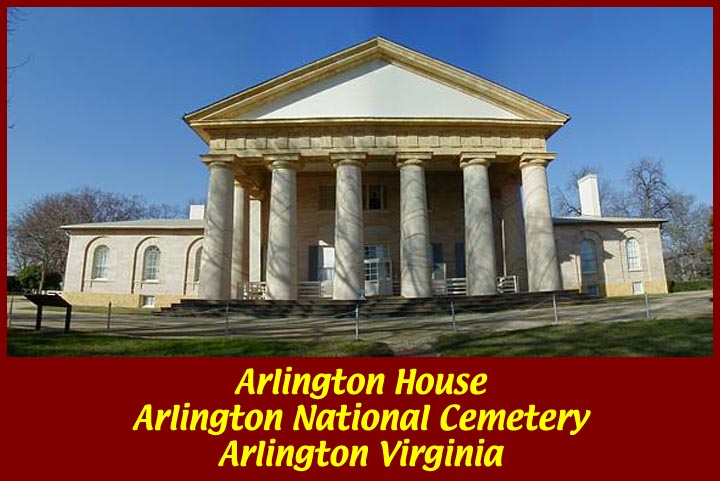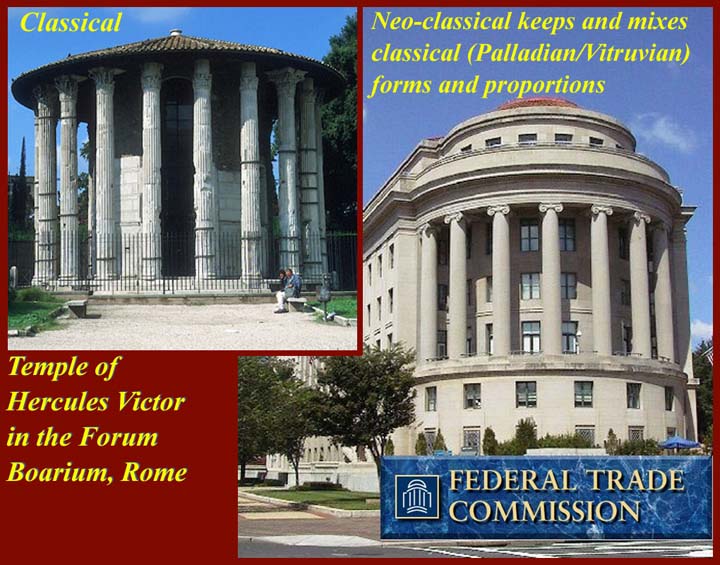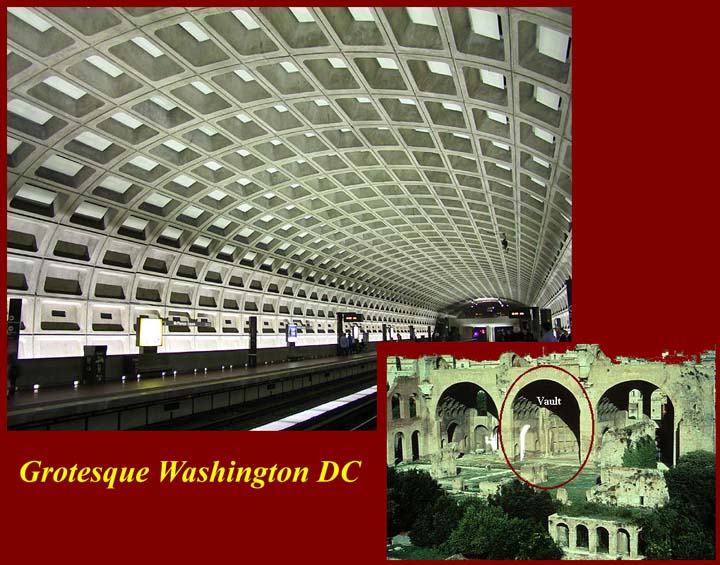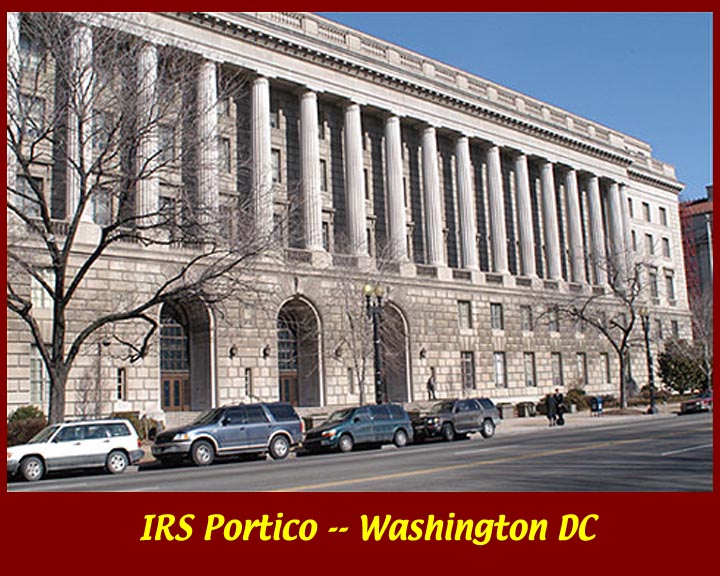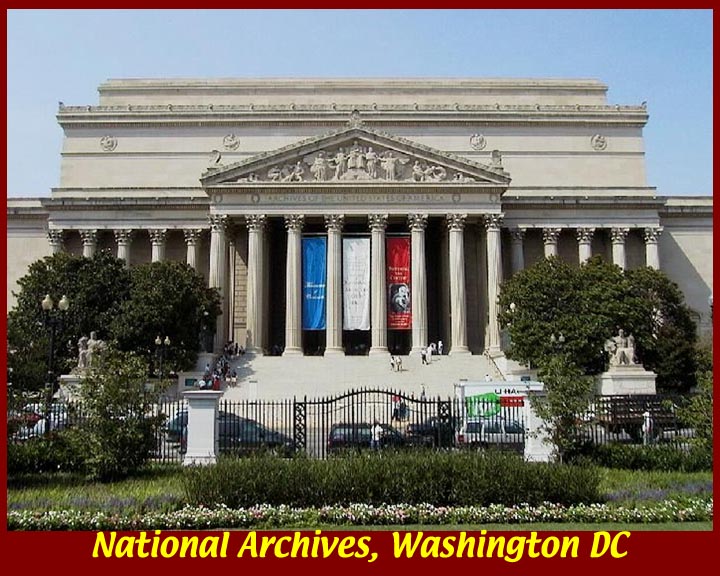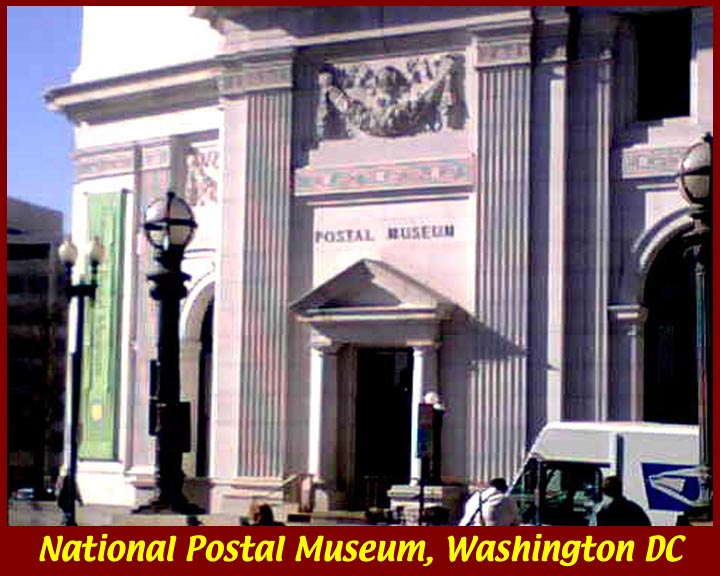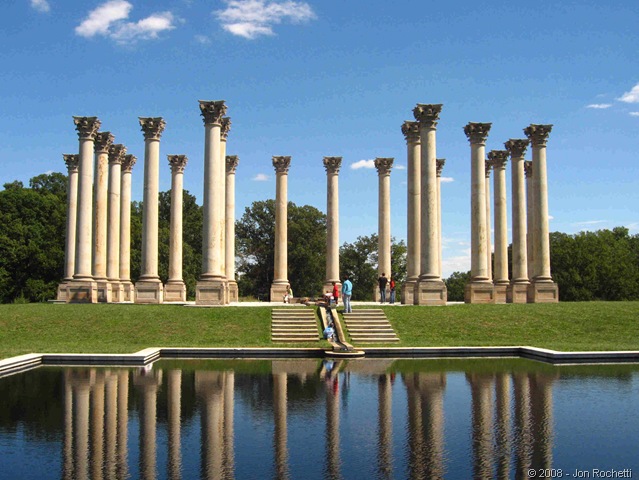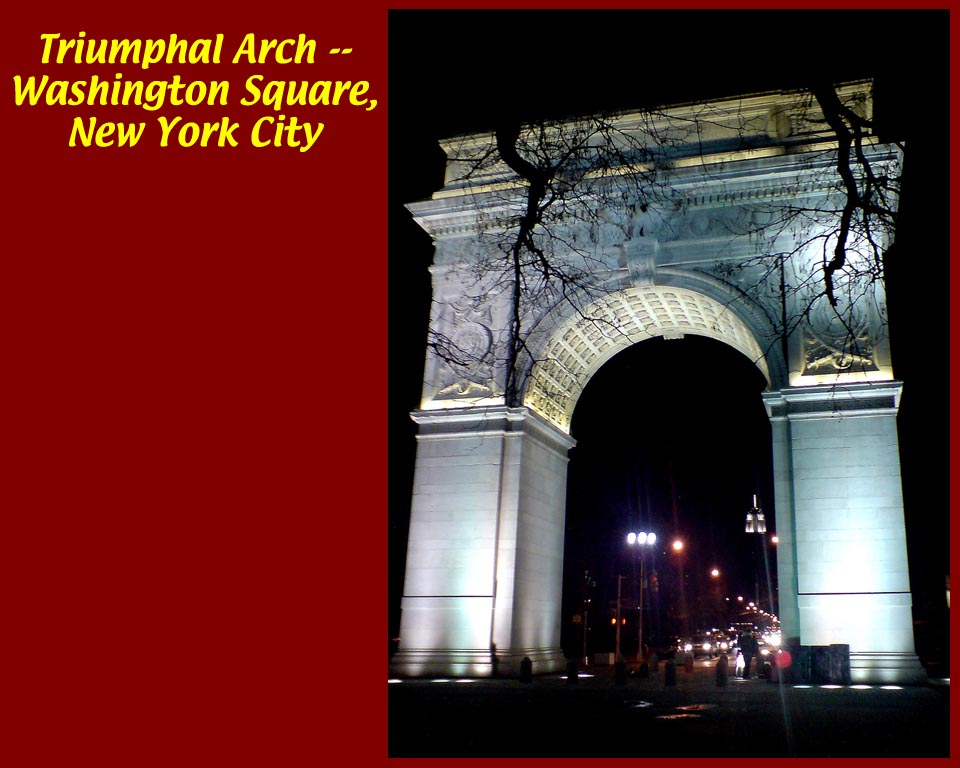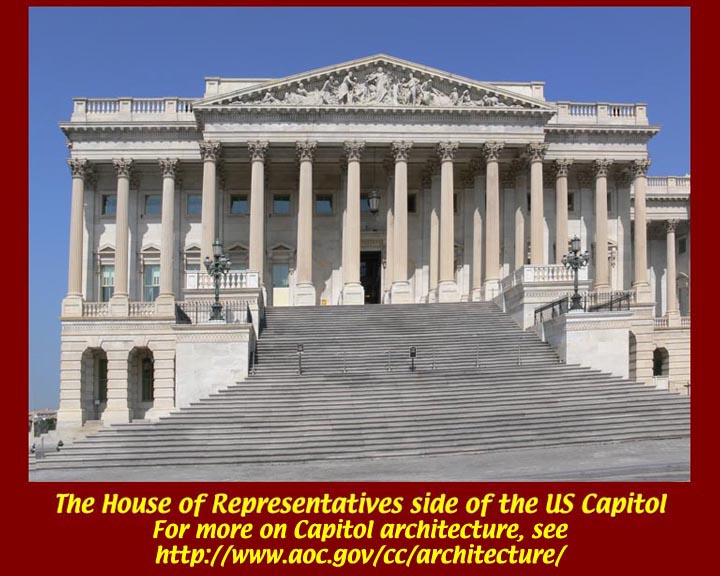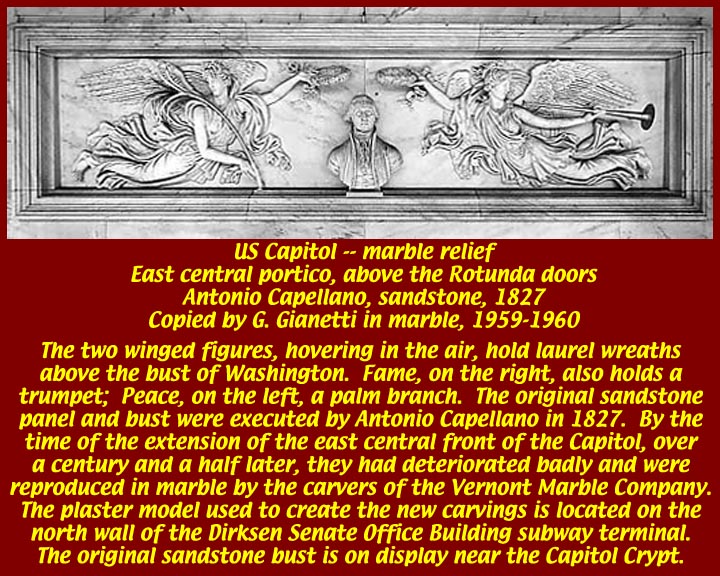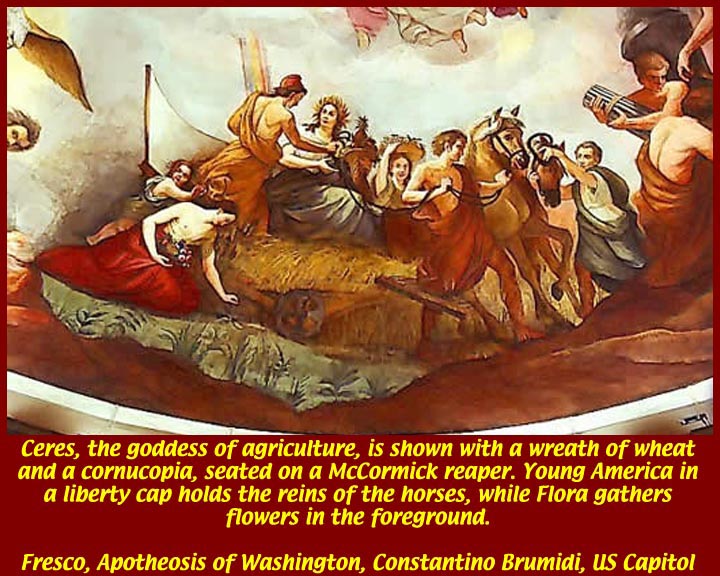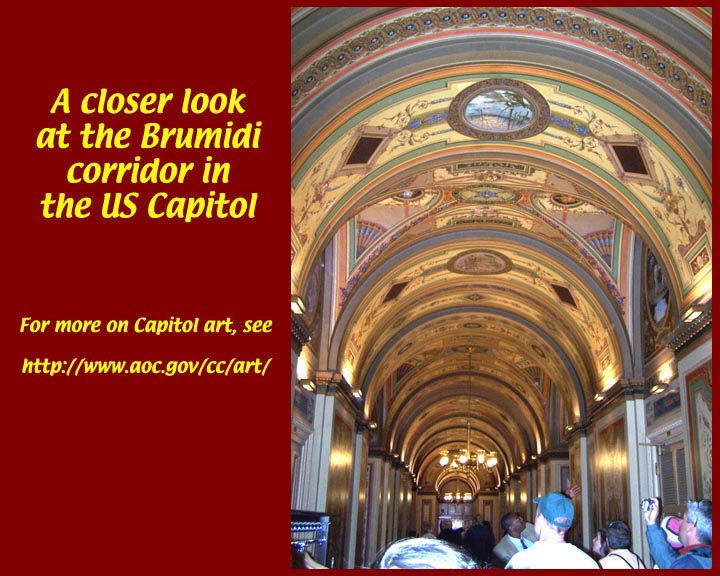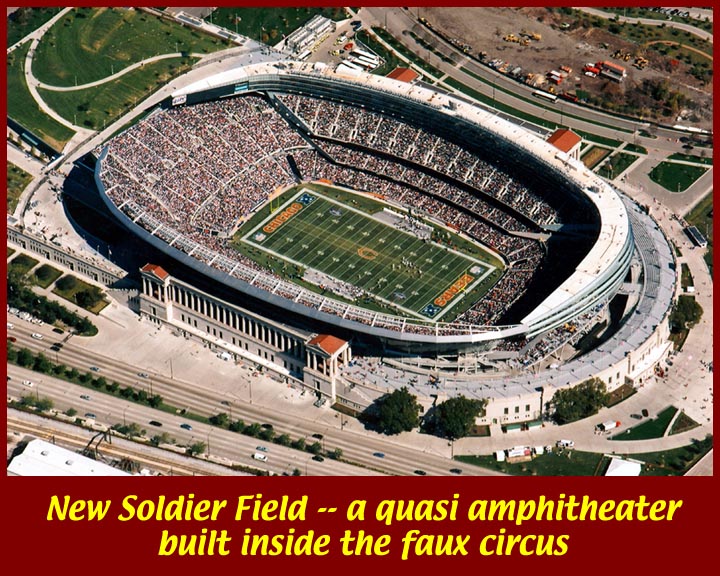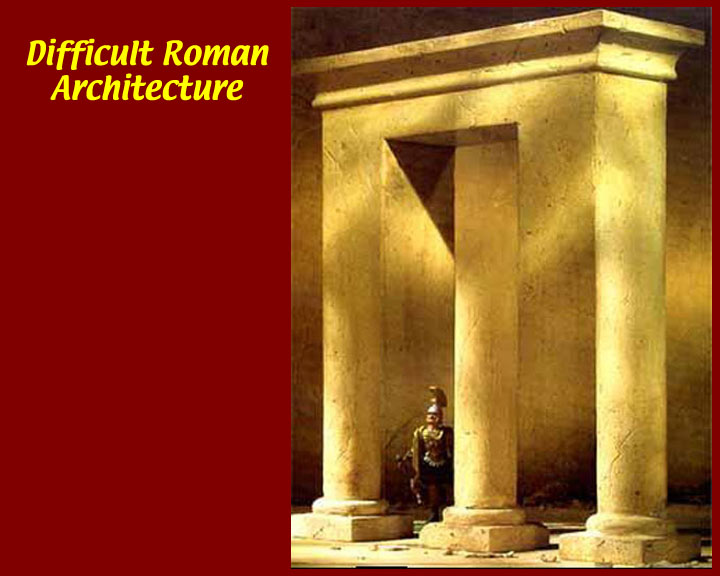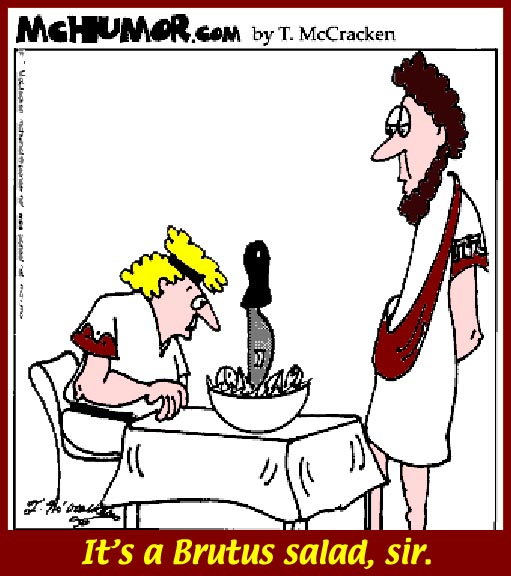Images for ALRI Ancient Rome Unit 10
Our Roman HeritageClick on links or small images to view larger images.
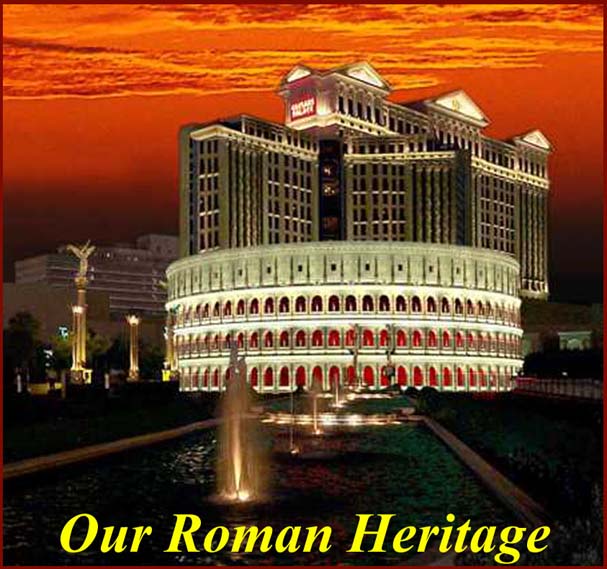
http://www.mmdtkw.org/AU1001aCaesarsNewTheater.jpg
http://www.mmdtkw.org/AU1001bVegas.jpg
Our society is permeated with Roman and ersatz Roman thought and imagery
http://www.mmdtkw.org/AU1001cOurRomanHeritage1.jpg
We look for connections, whether in attempts to prove that Romans colonized the United States or by calling our sports stadiums "colosseums" or by seeing out presidents as ancient Romans.
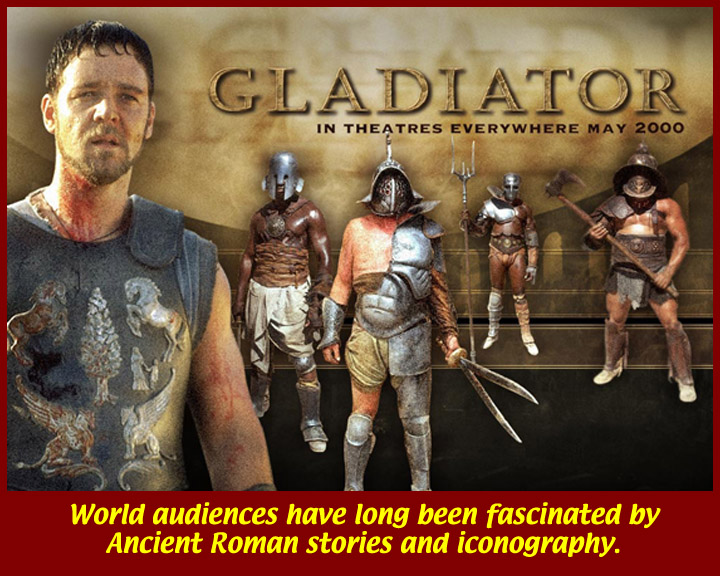
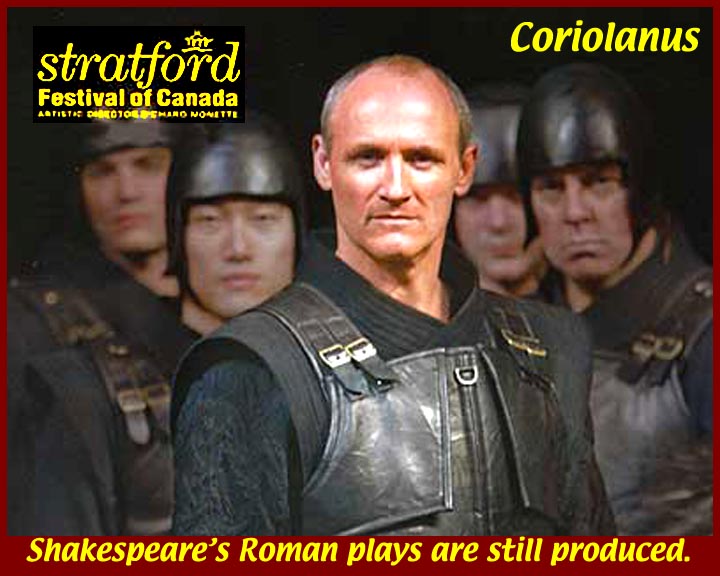
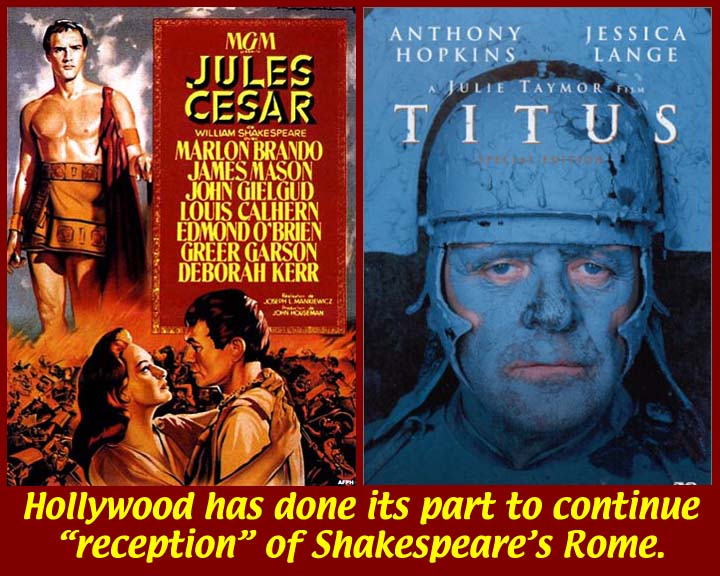
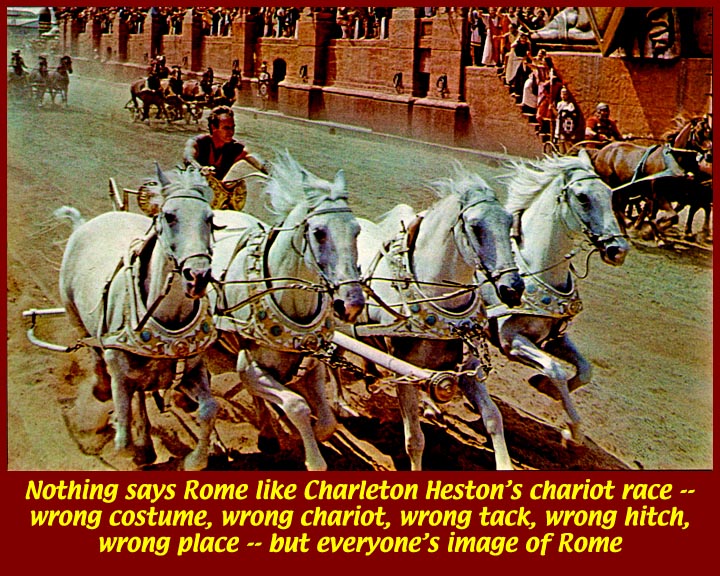
http://www.mmdtkw.org/AU1002aGladiator.jpg
http://www.mmdtkw.org/AU1002bCoriolanusStratford.jpg
http://www.mmdtkw.org/AU1002cHollywoodShakespeareRome.jpg
http://www.mmdtkw.org/AU1002dChariotHestonHur.jpeg
http://www.mmdtkw.org/AU1002gRomeHBO.jpg
On screen and stage, we are preoccupied with things Roman, whether in high "culture" -- e.g., Shakespeare -- or in video soap operas like the Rome television series. Whether high or low culture, we've never been overly concerned with historical accuracy.
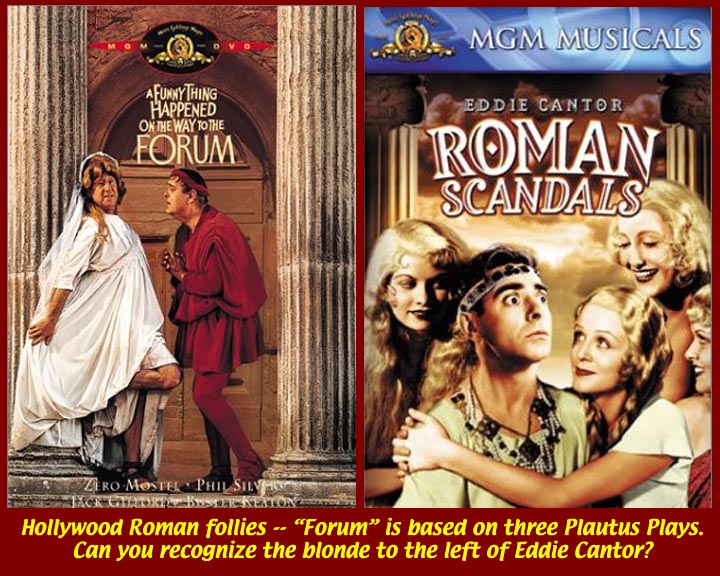
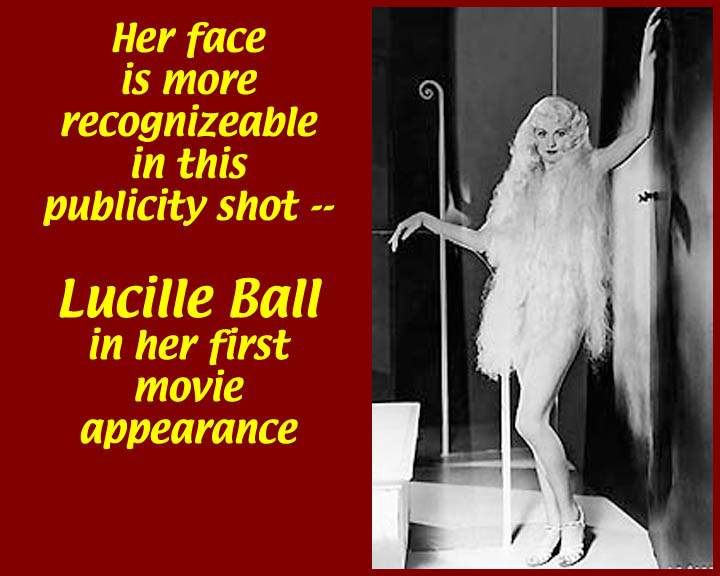
http://www.mmdtkw.org/AU1002eHollywoodFollies.jpg
http://www.mmdtkw.org/AU1002fRomanSlaveCheesecake.jpg
http://www.mmdtkw.org/AU1002hAnimalHouseBelushiToga3.jpg
Light entertainments often have Roman connections. Some have deep Roman roots -- A Funny Thing Happened on the Way to the Forum was based on three plays by the Ancient Roman comic dramatist Plautus. But others, like Roman Scandals used Rome as a metaphor for modern corruption (crooked politicians and bankers) and gave us the lagniappe of a naked Lucille Ball (chained to a wall with many other slave beauties in the film). John Belushi in Animal House was the image of Silenus, the teacher and faithful companion of Bacchus.
(1)
(2)
(3)
http://www.mmdtkw.org/AU1003aRomanReenactors1.jpg
http://www.mmdtkw.org/AU1003bLegioXX-DC.jpg
http://www.mmdtkw.org/AU1003cTogaReenact.jpg
Some people make a hobby of pretending they are Romans. Their research, whether into (1 and 2) Roman war and military camp life or into (3) how much alcohol a Roman could drink is meticulous and at least the former is very accurate.
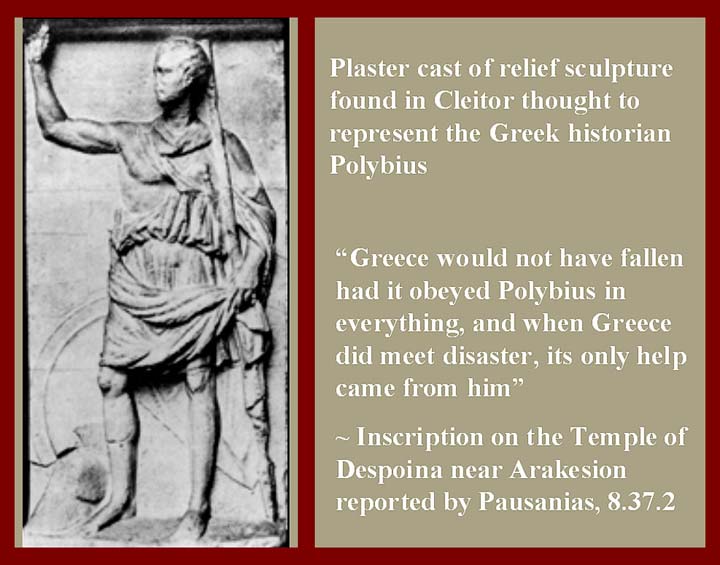
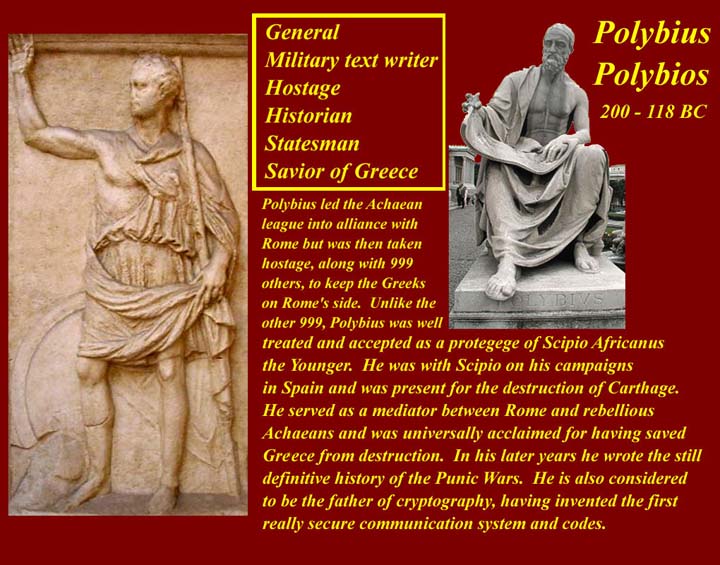
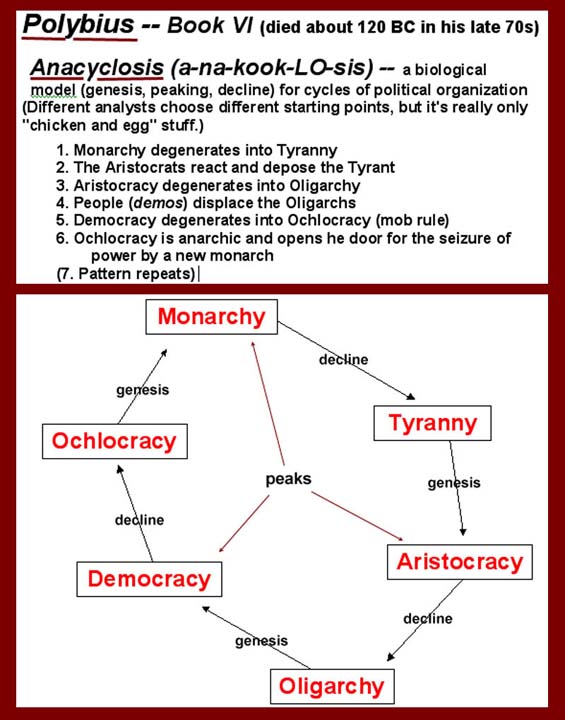
http://www.mmdtkw.org/AU1004aPolybius.jpg
http://www.mmdtkw.org/AU1004bPolybius2.jpg
http://www.mmdtkw.org/AU1004cPolybiusAnacyclosis.jpg
http://www.mmdtkw.org/AU1004dBreakingAnacyclosis.jpg
Polybius, as we have seen, was a Greek historian who wrote about Rome. In one chapter of his History of the Punic Wars, he wrote about why Rome had survive long enough to become a great power. His answer was that Rome had a complex government in which thee branches checked and balanced each other.
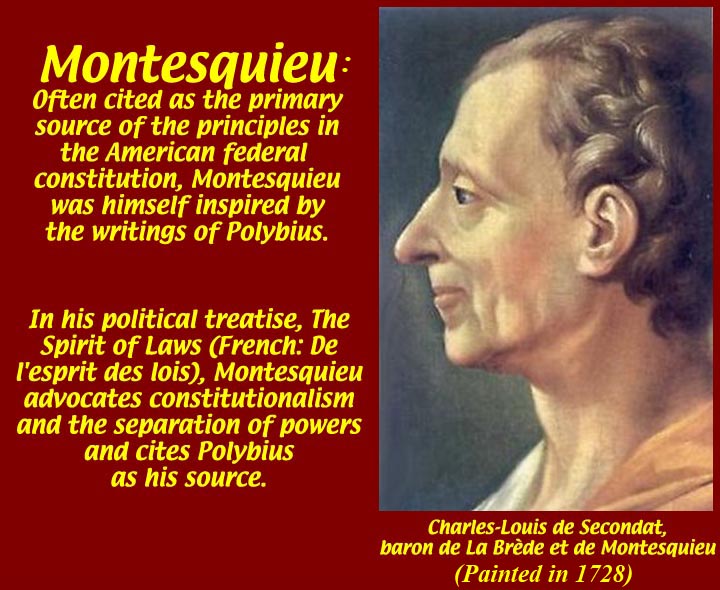
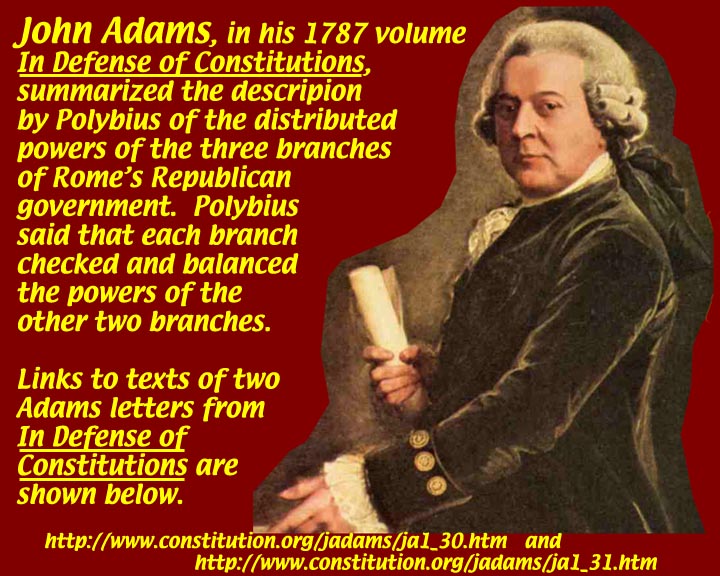
http://www.mmdtkw.org/AU1004eMontesquieu.jpg
http://www.mmdtkw.org/AU1004fJohnAdams.jpg
http://www.mmdtkw.org/AU1004gJefferson.jpg
A French aristocrat, Montesquieu, distilled the theories of of Polybius. The American Founding Fathers were well acquainted with Montesquieu's works and with the writings of Polybius. John Adams had written a summary of Polybius, and Jefferson, who was in Paris during the US Constitutional Convention, sent numerous copies of translations of Polybius to his colleagues at the Philadelphia convention.
http://www.mmdtkw.org/AU1005TwelveTables.jpg
The Bill of Rights, the first ten amendments to the US Constitution, was based on the Twelve Tables, which was the equivalent document of the Roman Republic. The drafters of the Bill of Rights originally proposed twelve amendments to the US Constitution, but the first two were not adopted. One of the unadopted suggestions was finally adopted during the 20th century as the 27th amendment (which made it impossible for congress to give itself a pay raise during the Congress then in session). The other proposal (which set an absolute number of persons in a congressional district) has never been adopted, which is why we have "proportional" representation in the House of Representatives.
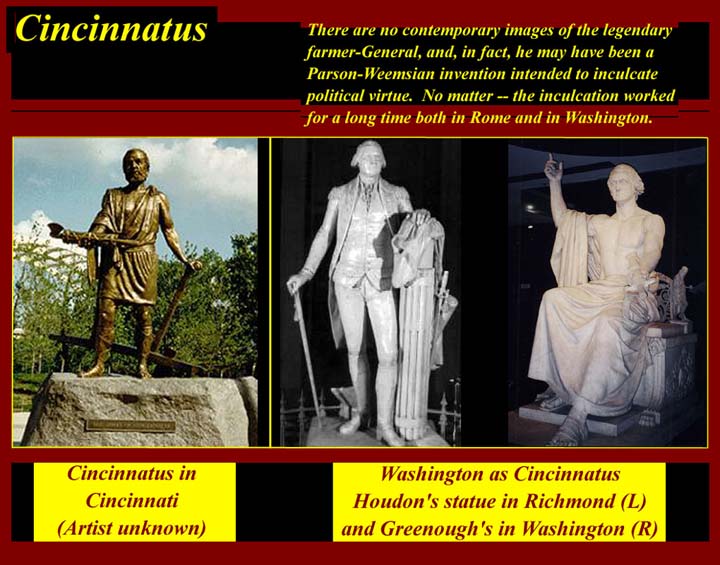
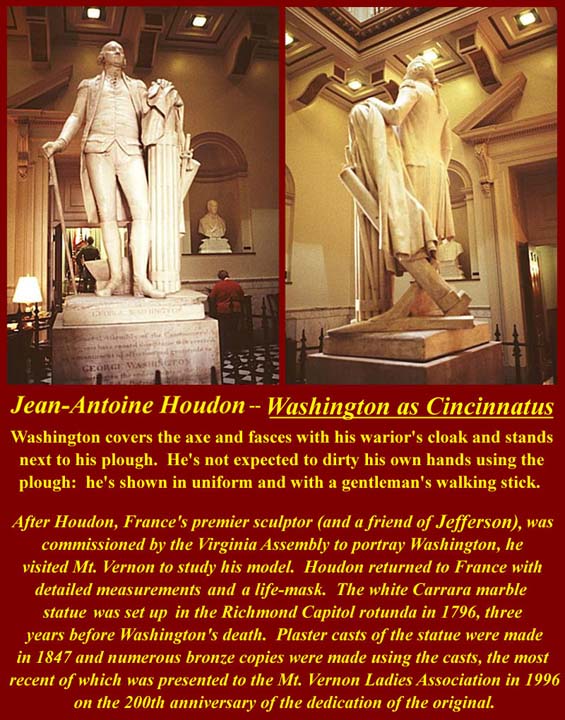
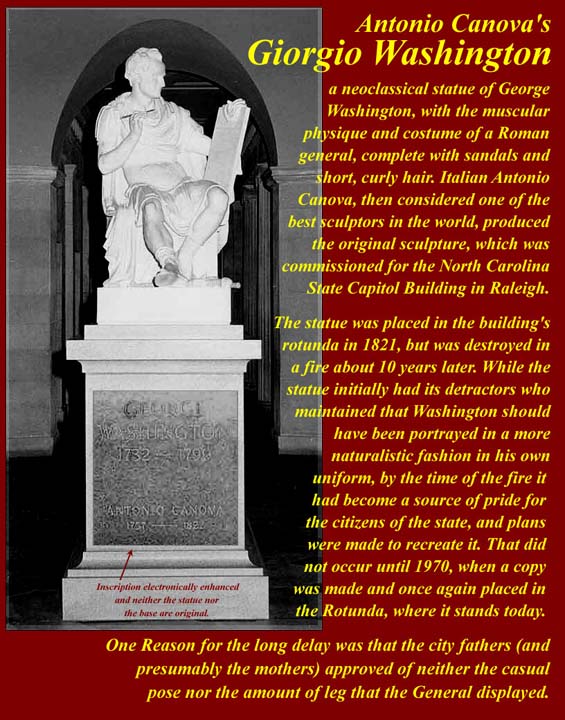
http://www.mmdtkw.org/AU1007aCincinnatusWashington.jpg
http://www.mmdtkw.org/AU1007bWashingtonCincHoudon.jpg
http://www.mmdtkw.org/AU1007cCanovaGiorgio.jpg
http://www.mmdtkw.org/AU1007dGreenoughWash1832.jpg
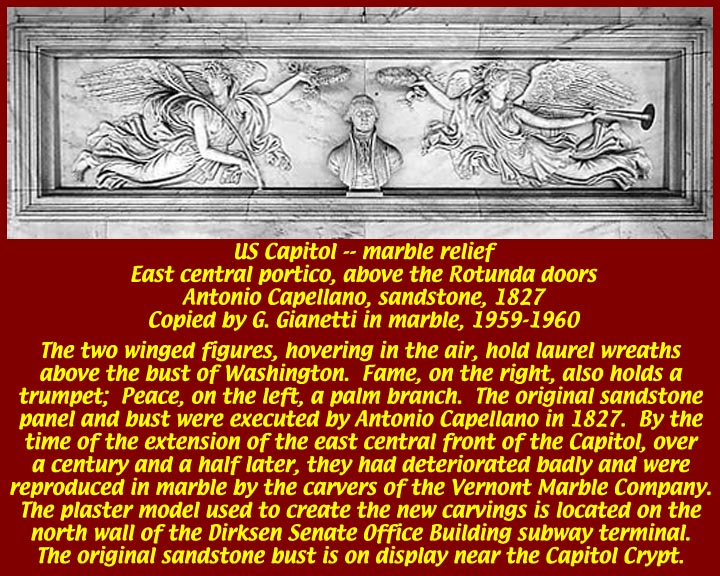
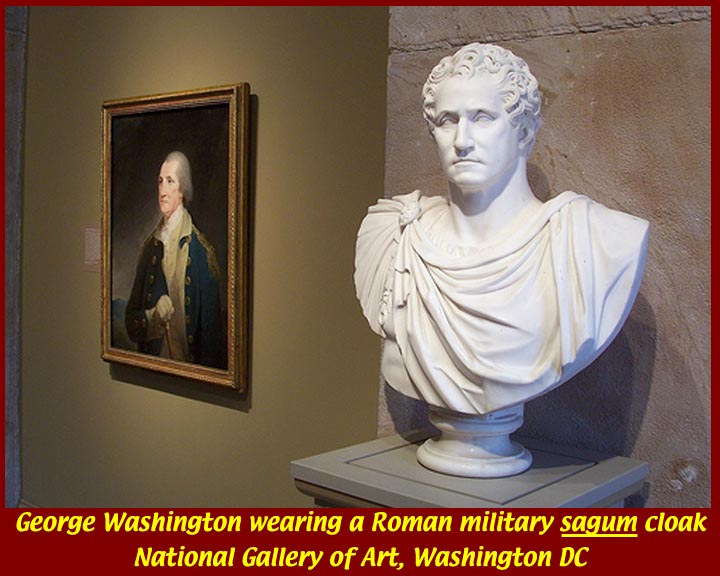
http://www.mmdtkw.org/AU1007eeWashingtonCrowned.jpg
http://www.mmdtkw.org/AU1007eRomanWashingtonNatGallery.jpg
http://www.mmdtkw.org/AU1007fLincolnCultStatue.jpg
As noted above, we tend to view our heroic presidents in Roman robes (or disrobes) and poses.
http://www.mmdtkw.org/AU1007gGrantCincinnatus1.jpg
Some of our leaders even named their horses after heroic Romans. This is Grant astride Cincinnatus.
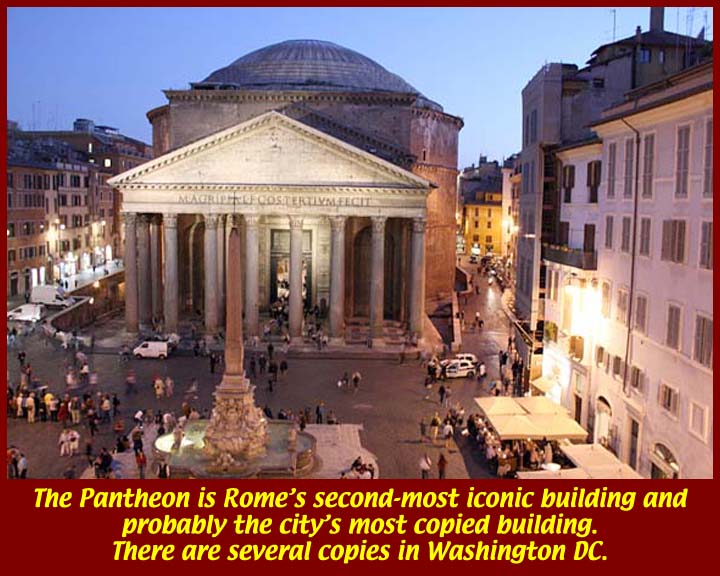
http://www.mmdtkw.org/AU1008aPantheonRome.jpg
http://www.mmdtkw.org/AU1008bInteriorPantheon.jpg
Roman architectural archetypes are everywhere in the US, especially in municipal, state, and federal government buildings, libraries, and monuments. One of the most copied forms is that of the Pantheon in Rome, which was a structure obviously loved by Jefferson.
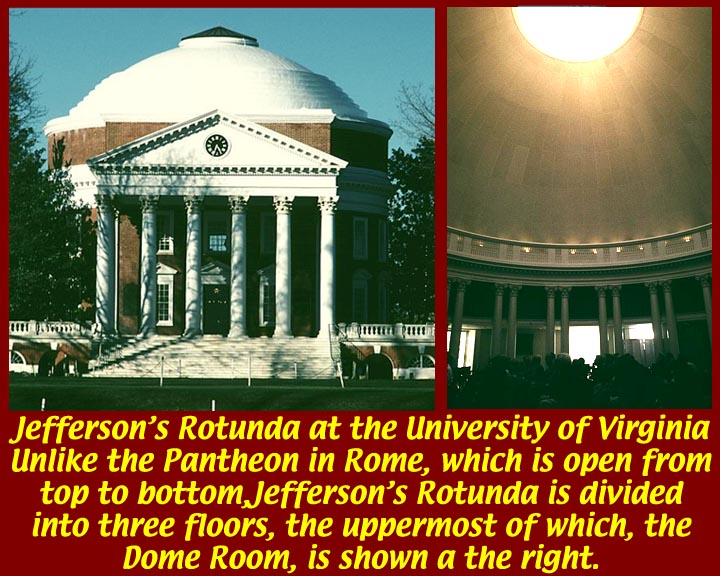
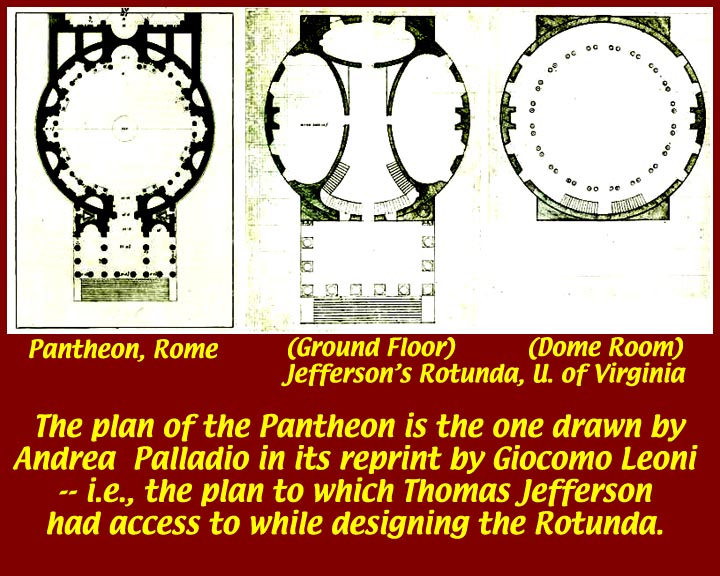
http://www.mmdtkw.org/AU1008cUVARotunda.jpg
http://www.mmdtkw.org/AU1008dPantheonUVARotundaComparison.jpg
Jefferson copied the Pantheon in his design for the library ("The Rotunda") at the University of Virginia.
http://www.mmdtkw.org/AU1008eUSCapitol1846Photo.jpg
The original design of the US Capitol in Washington DC was also based on the Pantheon, but the execution of the project resulted in a building that was ugly. Luckily a later reconstruction of the central dome had a much better result.
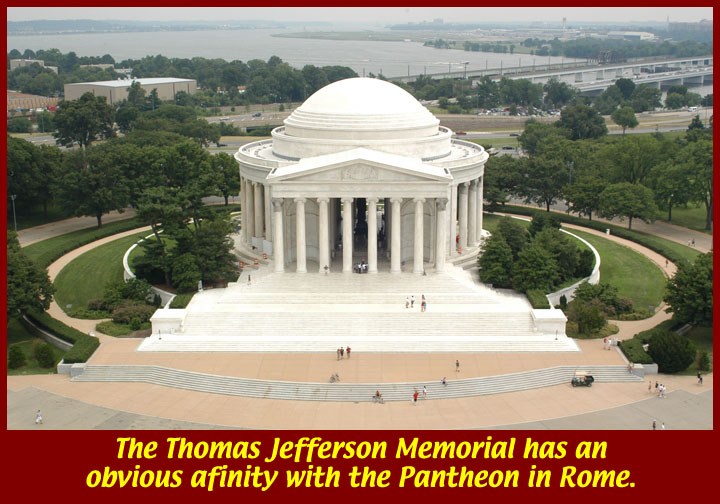
http://www.mmdtkw.org/AU1008gJeffersonMemorial.jpg
http://www.mmdtkw.org/AU1008hJeffersonMemorialDusk.jpg
The Jefferson Memorial, designed by John Russel Pope, used Jefferson's beloved Pantheon design.
http://www.mmdtkw.org/AU1008iJeffersonMonticello.jpg
Jefferson's Monticello was like a Roman "suburban villa" which again adopted the Pantheon design -- although the dome and its drum were octagonal rather than round.
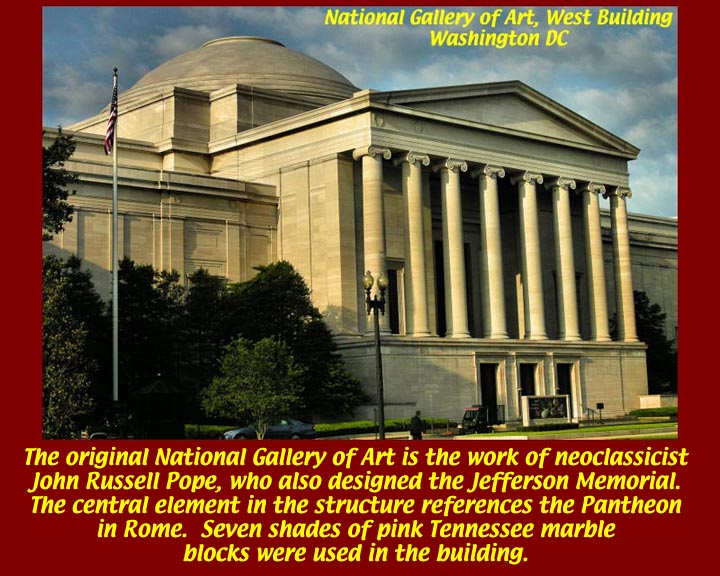
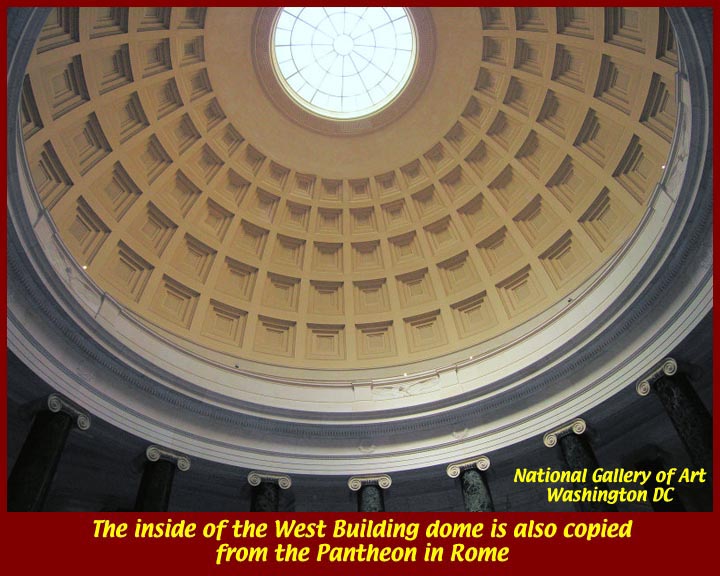
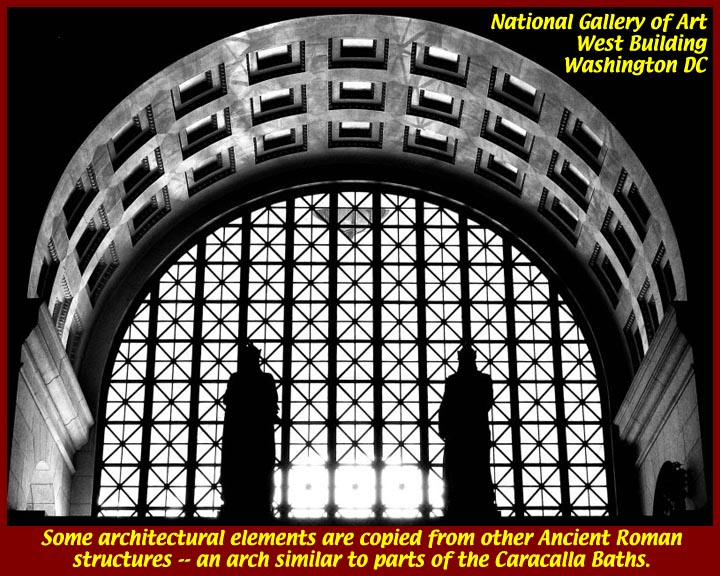
http://www.mmdtkw.org/AU1008jWestBuildingNatGal.jpg
http://www.mmdtkw.org/AU1008kaaWestBldgDome.jpg
http://www.mmdtkw.org/AU1008kbWestBldgArch.jpg
http://www.mmdtkw.org/AU1008kcCaracallaReconst.jpg
The West Building of the National Gallery of Art was also designed by the designer of the Jefferson Memorial, John Russel Pope, and also used the Pantheon as its model.
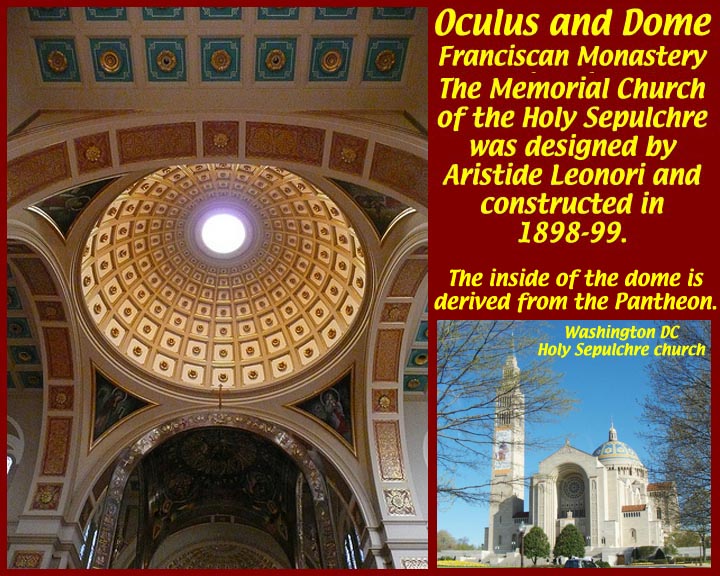
http://www.mmdtkw.org/AU1008lFranciscanMonasteryDC.jpg
The Memorial Church of the Holy Sepulchre at the Washington Franciscan monastery is a composite of several styles, but the interior of its dome clearly emulates the interior of the Pantheon dome.
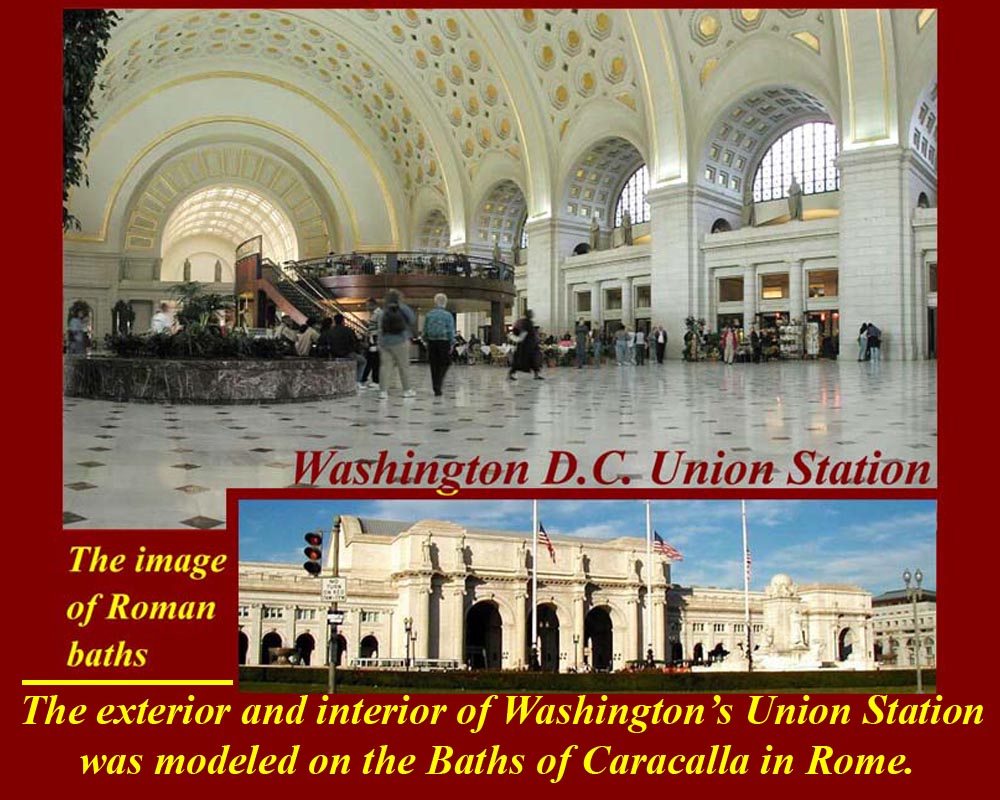
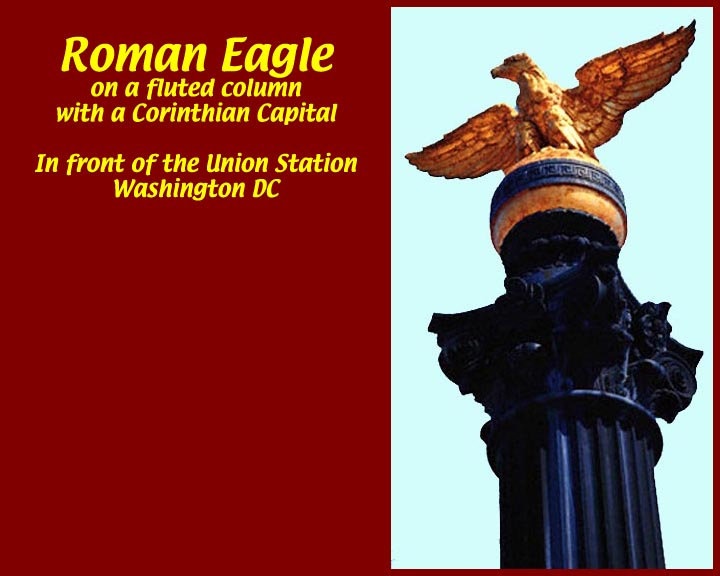
http://www.mmdtkw.org/AU1009aUnionStation98.jpg
http://www.mmdtkw.org/AU1009bEagleUnionStationDC.jpg
http://www.mmdtkw.org/AU1009cPennStationNY.jpg
Washington's Union Station and the Pennsylvania Station in New York City were built to resemble the Baths of Caracalla in Rome.
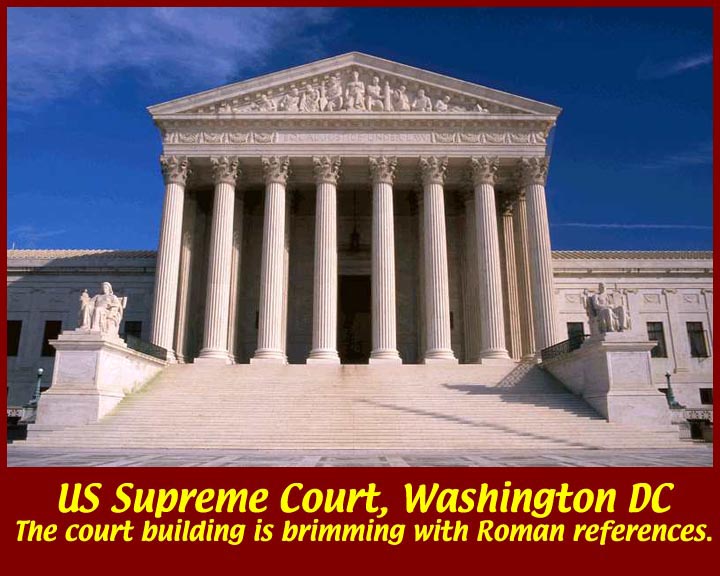
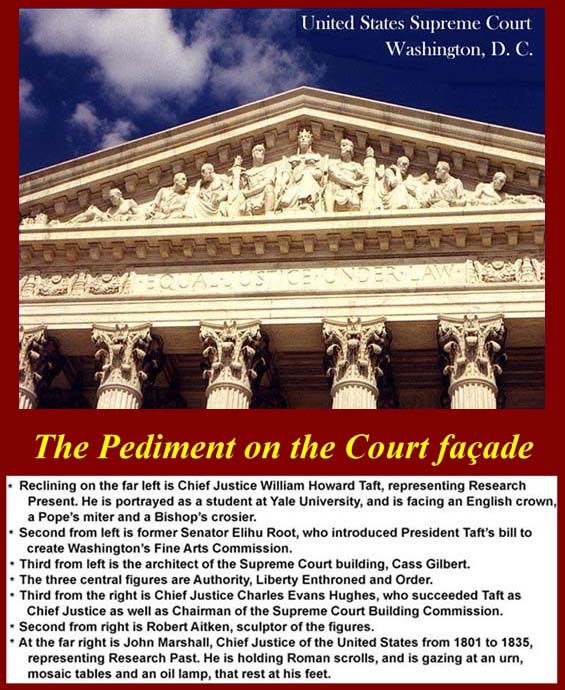
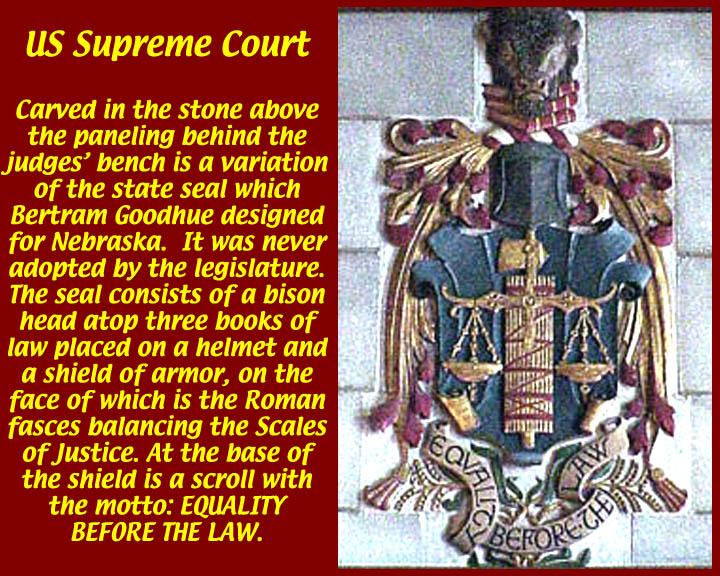
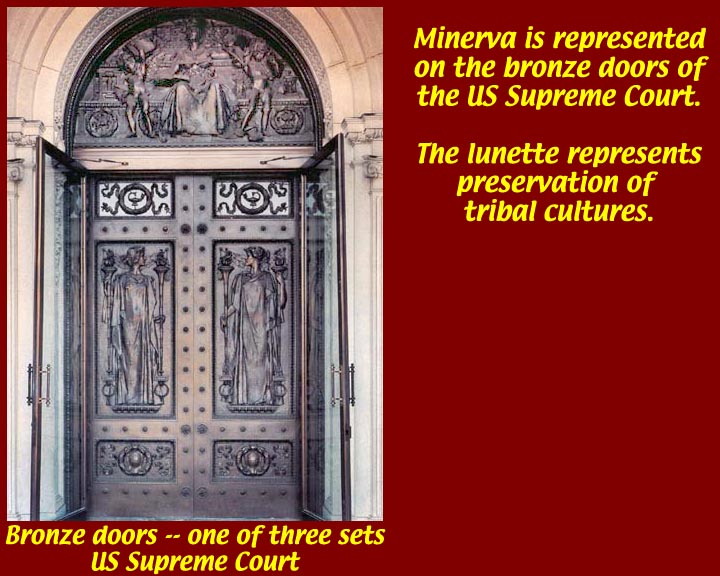
http://www.mmdtkw.org/AU1010aUSSupremeCourt.jpg
http://www.mmdtkw.org/AU1010bCourtPediment.jpg
http://www.mmdtkw.org/AU1010cEqualJustice.jpg
http://www.mmdtkw.org/AU1010dUSSupremeCourtDoors.jpg
http://www.mmdtkw.org/AU1010eUSSupremeCourtLobby.jpg
The US Supreme Court was designed and decorated with Rome in mind.
Library of Congress
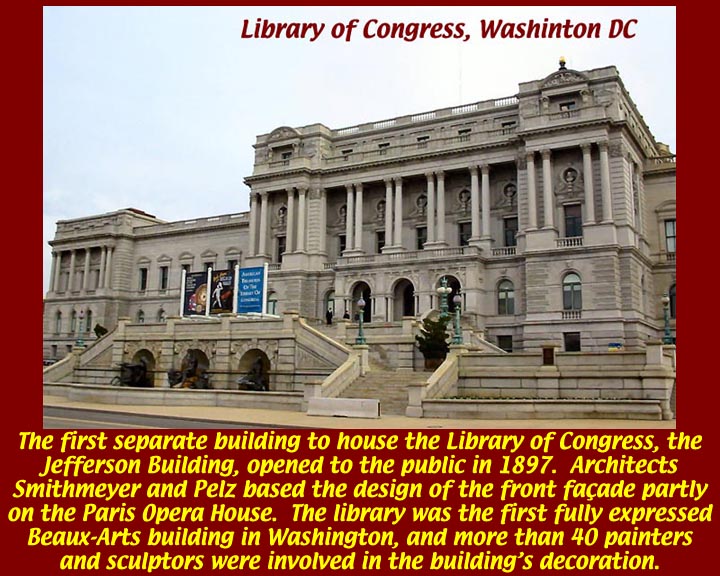
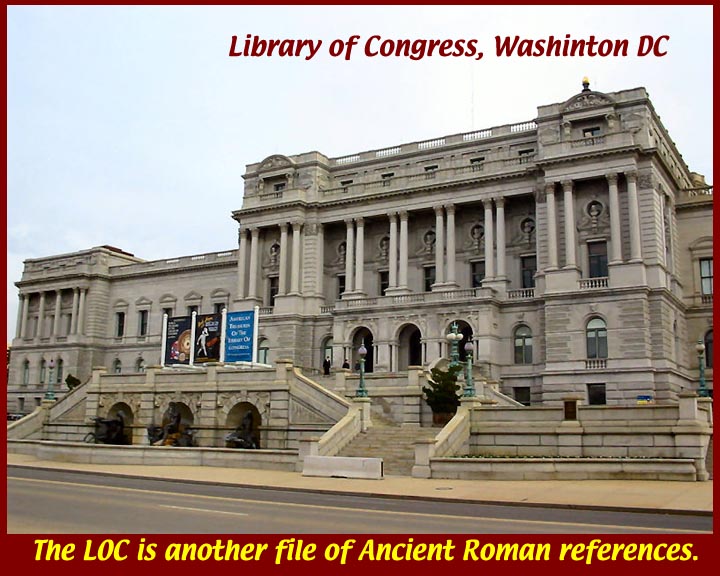
http://www.mmdtkw.org/AU1011aaLibrary_of_Congress.jpg
http://www.mmdtkw.org/AU1011aLibrary_of_Congress.jpg
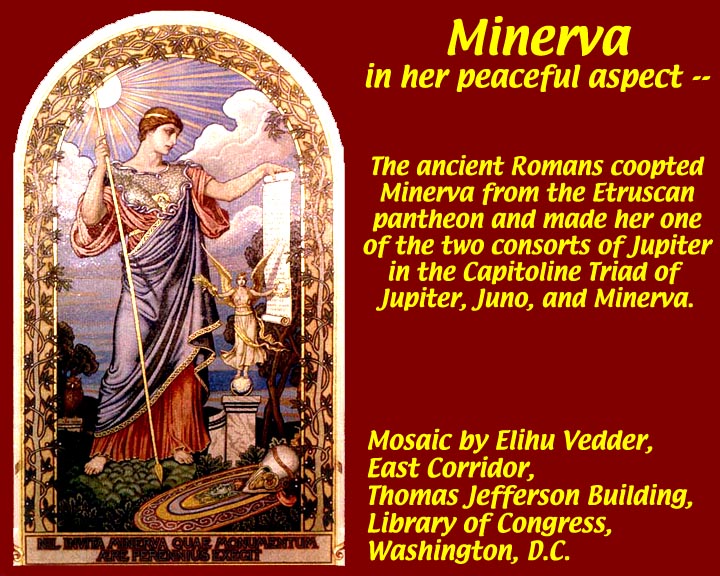
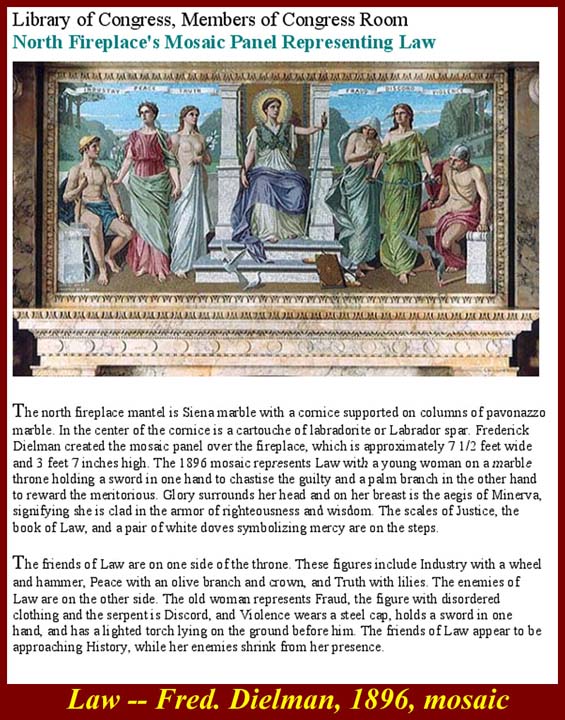
http://www.mmdtkw.org/AU1011bMinervaLOC.jpg
http://www.mmdtkw.org/AU1011cLOCMosaicNorth.jpg
http://www.mmdtkw.org/AU1011dLOCMosaicSouth.jpg
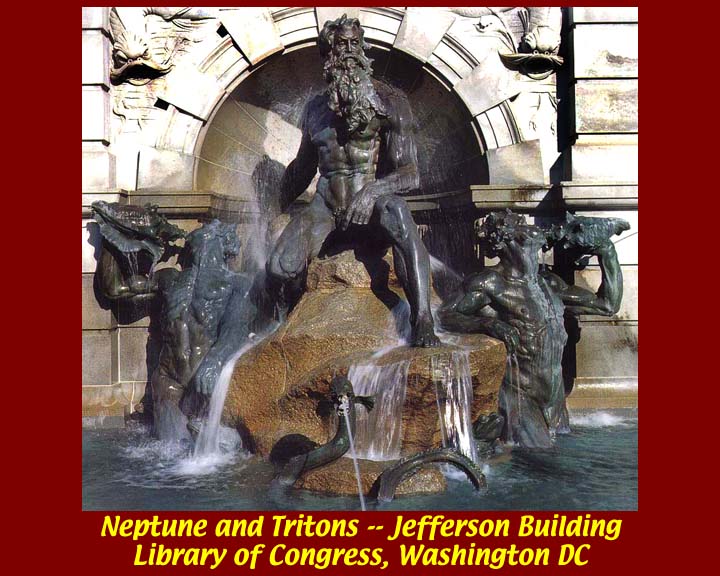
http://www.mmdtkw.org/AU1011eFountainNeptune.jpg
http://www.mmdtkw.org/AU1011fNeptuneNight.jpg
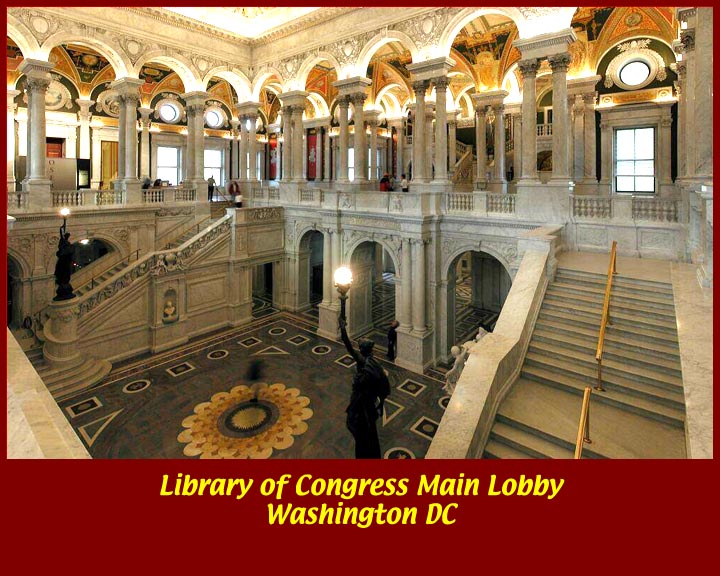
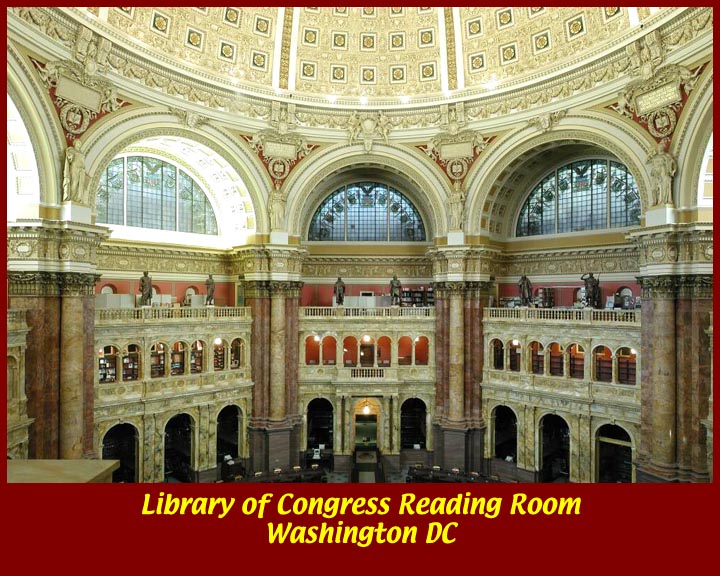
http://www.mmdtkw.org/AU1011gLibraryOfCongress1.jpg
http://www.mmdtkw.org/AU1011hLibraryOfCongress2.jpg
http://www.mmdtkw.org/AU1011iLibrary_of_Congress.jpg
The Library of Congress with its Fountains, mosaics, opus sectile floors, and grand galleries could have been lifted straight from Imperial Rome.
Other Government Buildings
http://www.mmdtkw.org/AU1012aAndrewMellonAud-FedTria.jpg
Federal Triangle, Washington DC
http://www.mmdtkw.org/AU1012bArlingtonHouse.jpg
Arlington House, Arlington National Cemetery
http://www.mmdtkw.org/AU1012cHerculesVictorFTC.jpg
The narrow end of the Federal Trade Commission in Washington looks like the Temple of Hercules Victor in Rome's Forum Boarium.
http://www.mmdtkw.org/AU1012dDCSubwayGrotesque.jpg
Washington subway stations look like the vaults of the Basilica of Maxentius in the Roman Republican Forum. It's not an accident; modern architects study Rome.
http://www.mmdtkw.org/AU1012eIRSGallery.jpg
A grand portico on the high podium of the Internal Revenue Service building in Washington DC.
http://www.mmdtkw.org/AU1012fNationalArchives.jpg
The National Archives in Washington with a Roman Octastyle front.
http://www.mmdtkw.org/AU1012gNationalPostalMuseum_004.jpg
A corner of the National Postal Museum, Washington DC, shows clear Roman architectural and decorative themes.
http://www.mmdtkw.org/AU1012hCapitolhColumnsArboretum.jpg
Pillars removed from the US Capitol, during an expansion are now arranged in the form of a Roman temple at the National Arboretum in Washington. The first Roman temples were open to the air.
http://www.mmdtkw.org/AU1012iPortraitGallery.JPG
The National Portrait Gallery with another octastyle front.
http://www.mmdtkw.org/AU1012jWashingtonSquareArchNY.jpg
The arch in New York's Washington Square.
The US Capitol
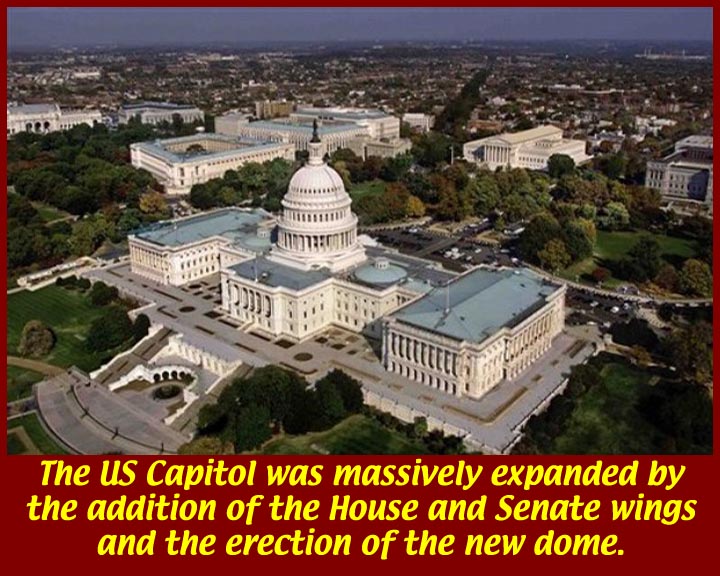
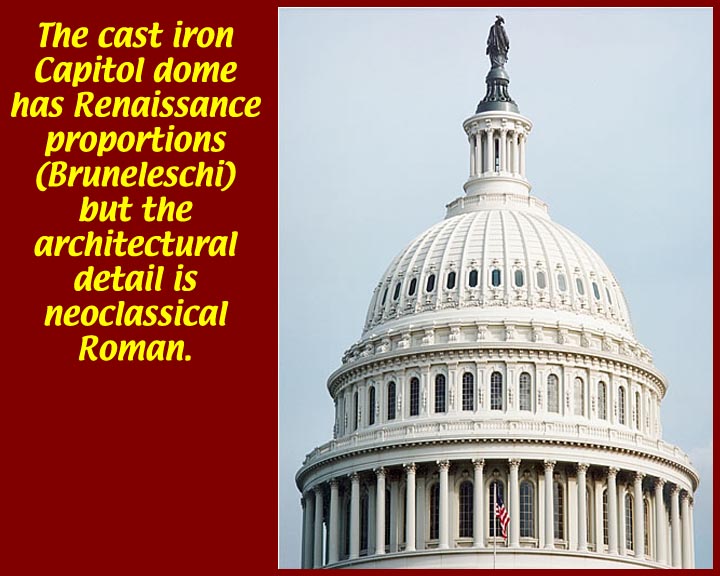
http://www.mmdtkw.org/AU1013aCapitolAerial.jpg
http://www.mmdtkw.org/AU1013bCapitolDome.jpg
http://www.mmdtkw.org/AU1013cCapitolHouseSide.jpg
Exterior Roman architecture
http://www.mmdtkw.org/AU1013dWashingtonCrowned.jpg
Washington crowned with the laurel crown of peace and the oak leaf crown of war.
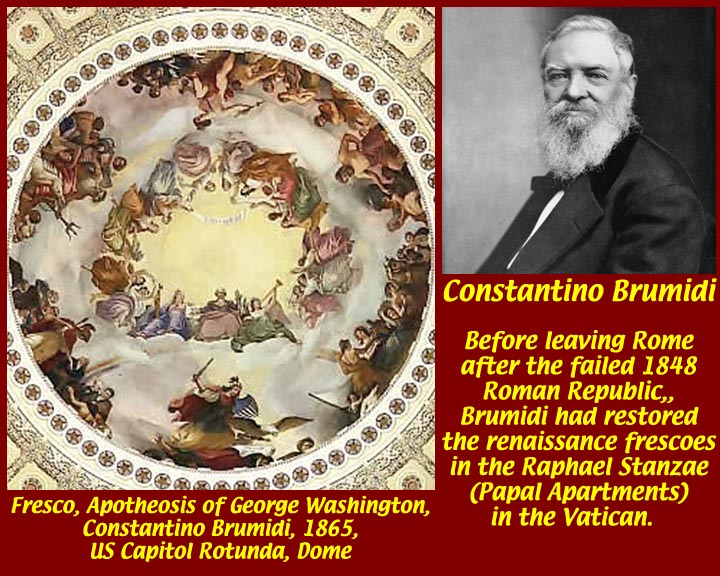
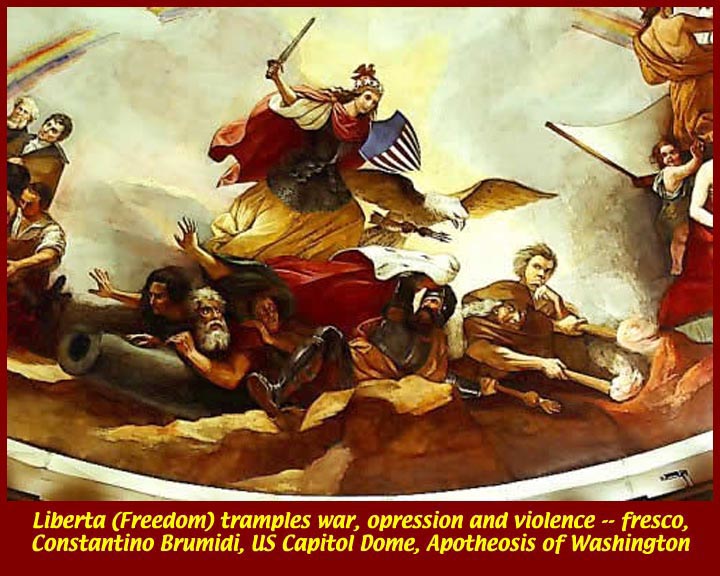
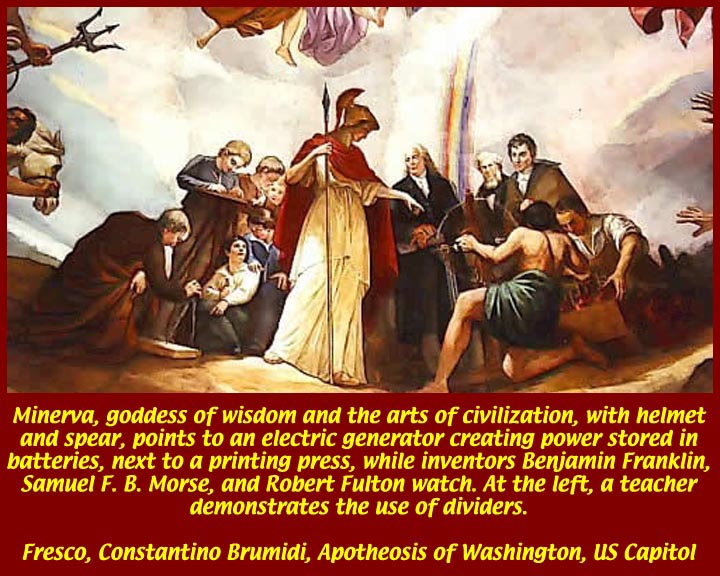
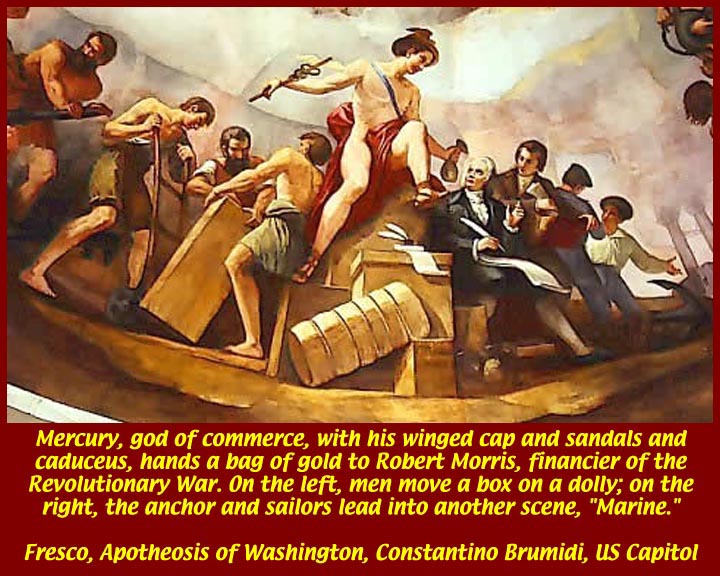
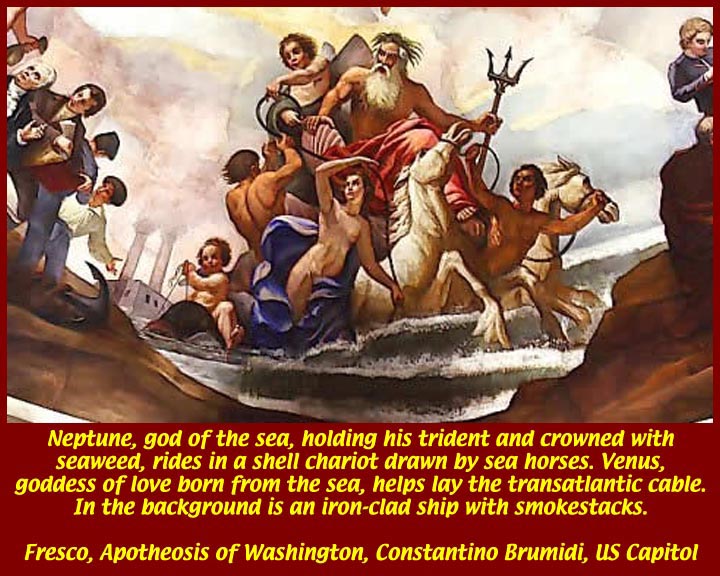
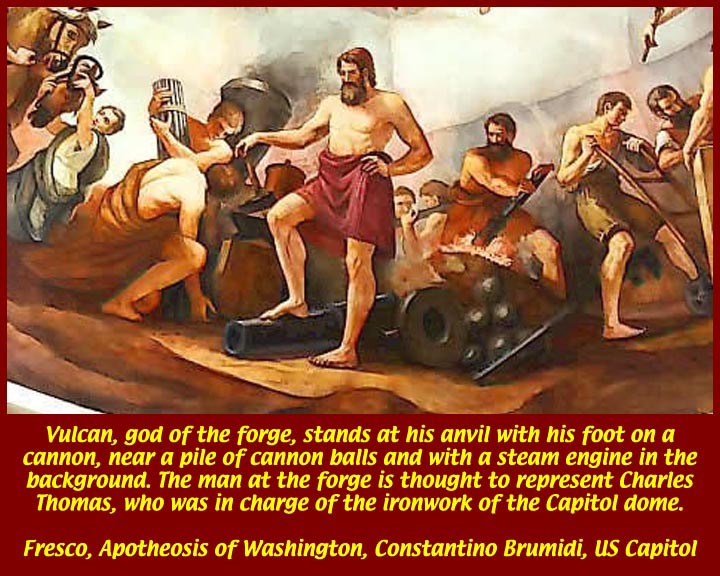
http://www.mmdtkw.org/AU1013e0apotheosis.jpg
http://www.mmdtkw.org/AU1013e1ApothWar.jpg
http://www.mmdtkw.org/AU1013e2ApothSci.jpg
http://www.mmdtkw.org/AU1013e3ApothCommerce.jpg
http://www.mmdtkw.org/AU1013e4ApothMar.jpg
http://www.mmdtkw.org/AU1013e5ApothMechanics.jpg
http://www.mmdtkw.org/AU1013e6ApothAgriculture.jpg
The apotheosis of Washington in the Capitol Dome by Constantino Brumidi depicts Roman gods and goddesses with 19th century iconography. Brumidi was an Italian exile who had previously restored Raphael's "stanzae" (papal apartments) on corridors in the Vatican.
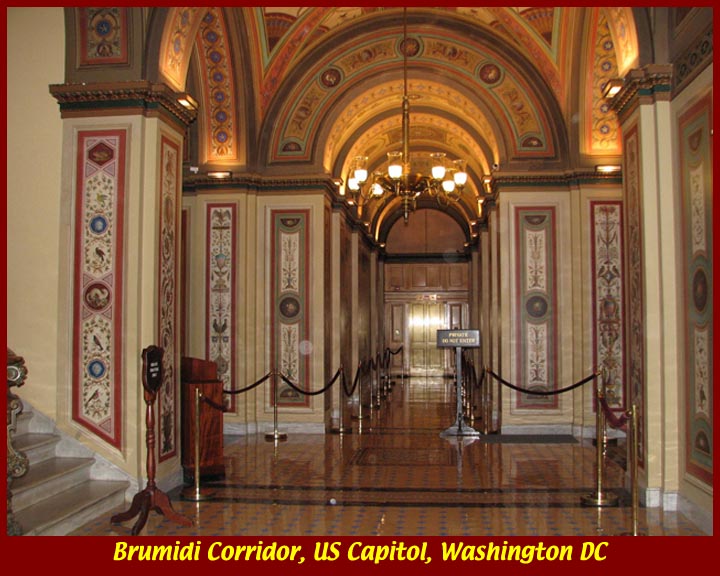
http://www.mmdtkw.org/AU1013e7BrumidCorridorUSCapitol.jpg
http://www.mmdtkw.org/AU1013e8BrumidiHallwayCapitol.jpg
Two images of Brumidi's corridors in the US Capitol. Brumidi adapted Renaissance "grotesque" styles to include American flora and fauna. The Renaissance grotesque style was an emulation of a style found in Nero's Domus Aurea, which was itself based on much earlier Etruscan imagery.
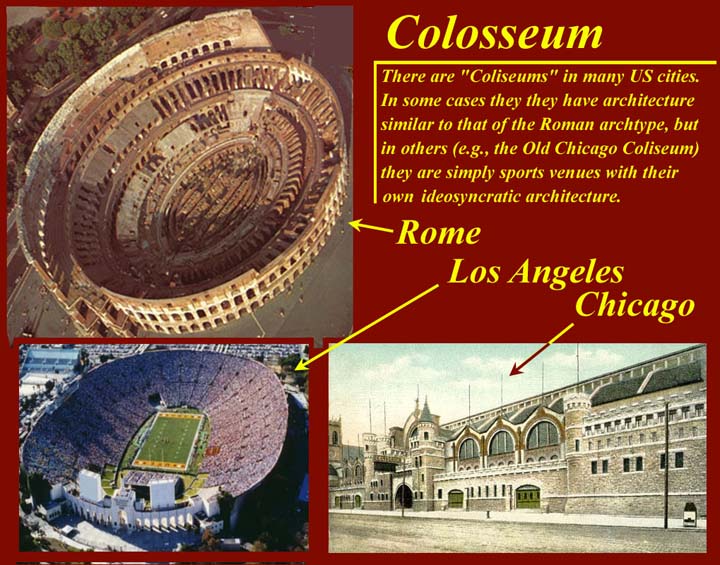
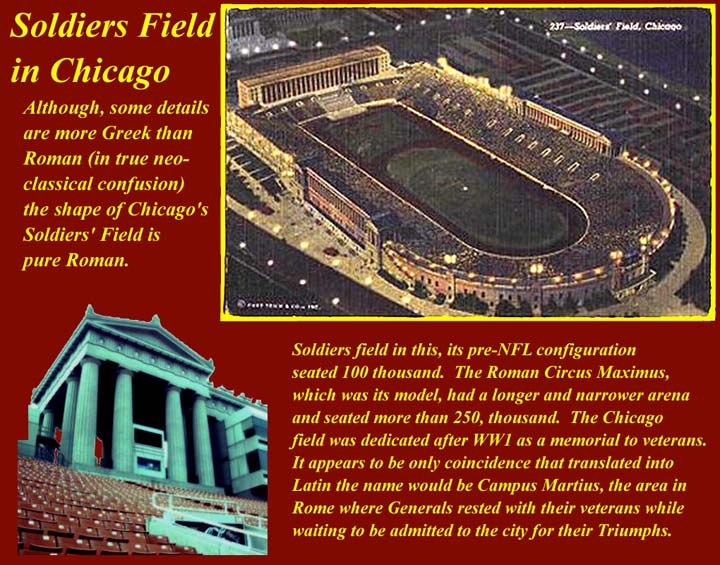
http://www.mmdtkw.org/AU1014aColosseum.jpg
http://www.mmdtkw.org/AU1014bSoldiersFieldChicago.jpg
http://www.mmdtkw.org/AU1014cNewSoldierField.jpg
We want our sports to be in colosseums, amphitheaters, and Roman style arenas. Soldier Field in Chicago originally looked like a broad copy of the Circus Maximus in Rome, but now a modern faux amphitheater has been built over and inside of the original structure.
http://www.mmdtkw.org/AU1015DifficultArchitecture.jpg
Difficult Architecture
http://www.mmdtkw.org/AU1016BrutusSalad.jpg

